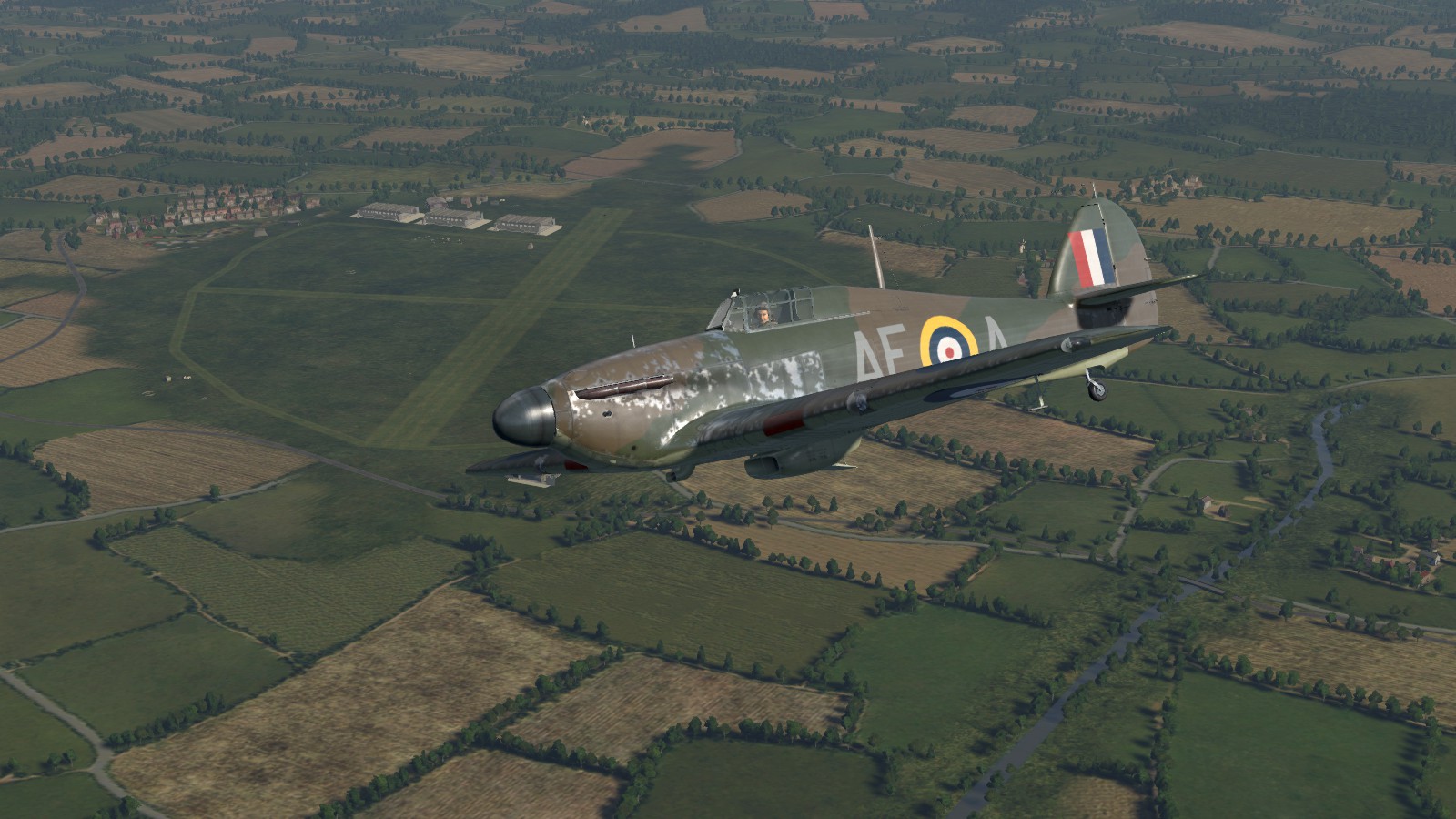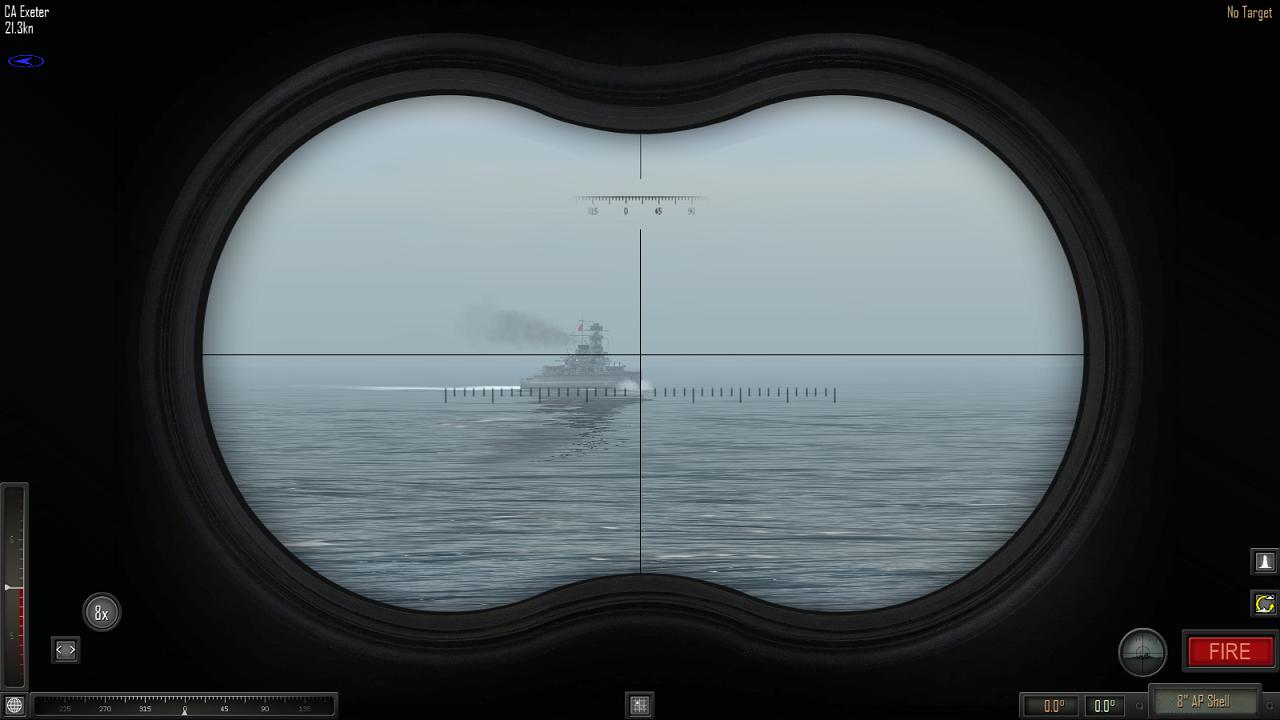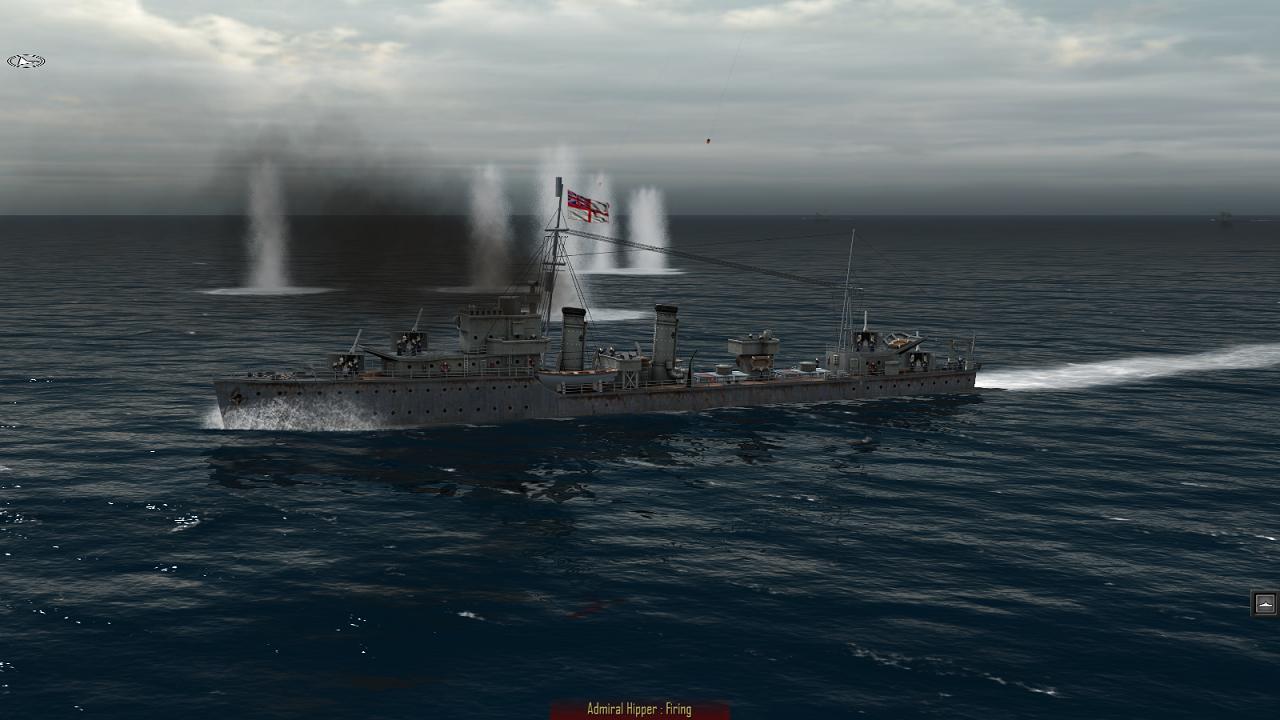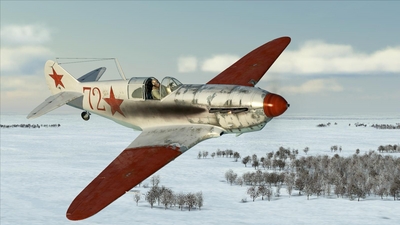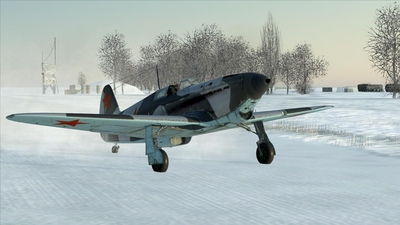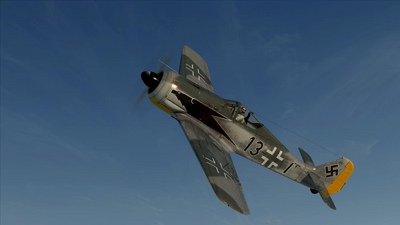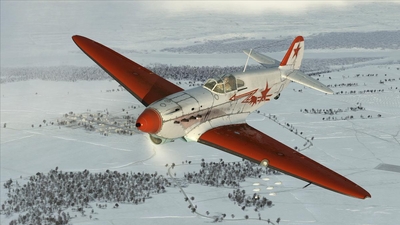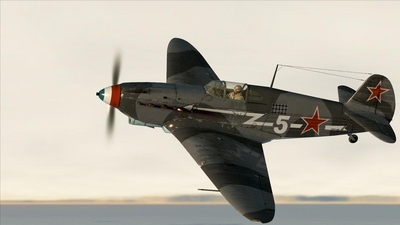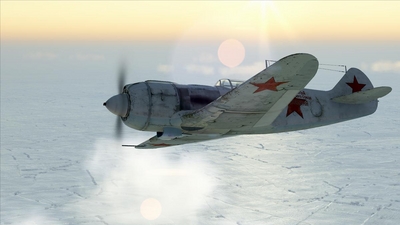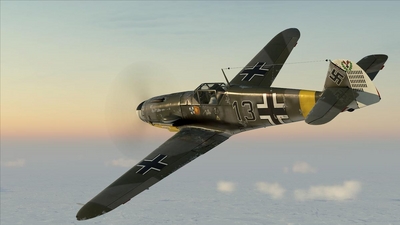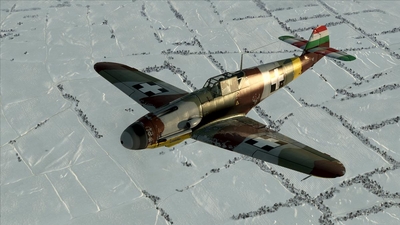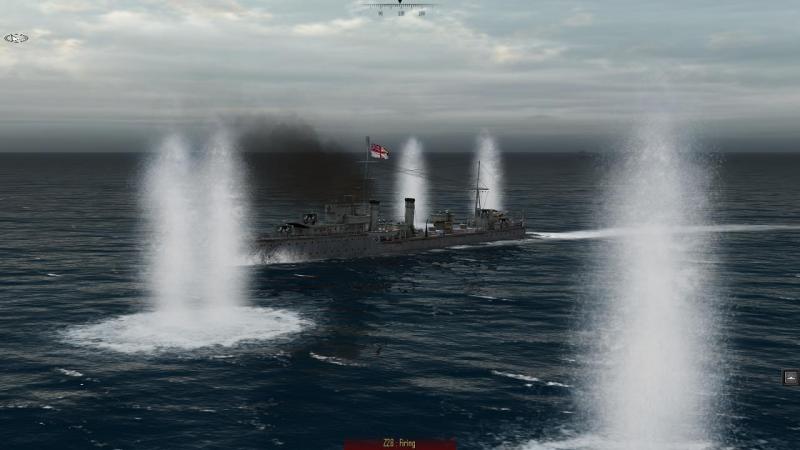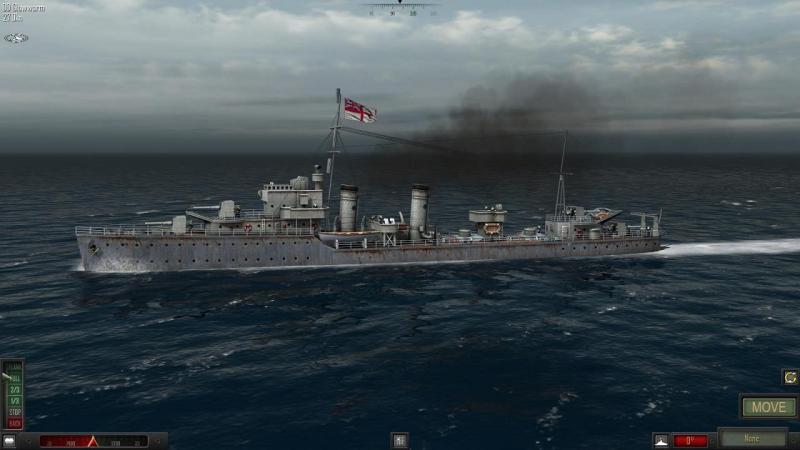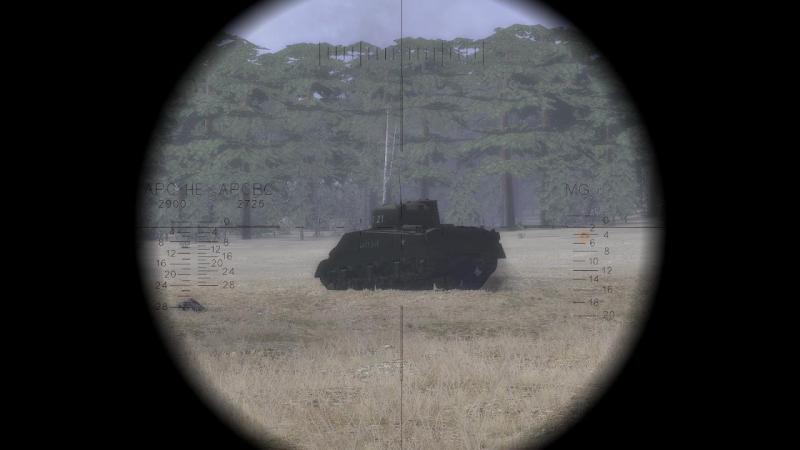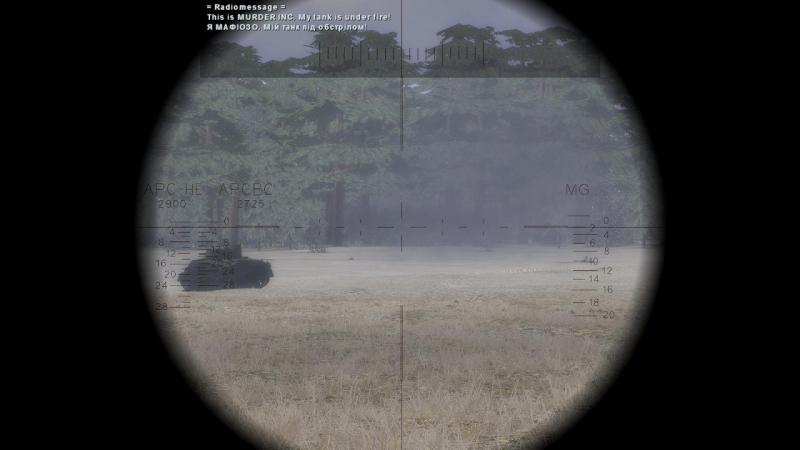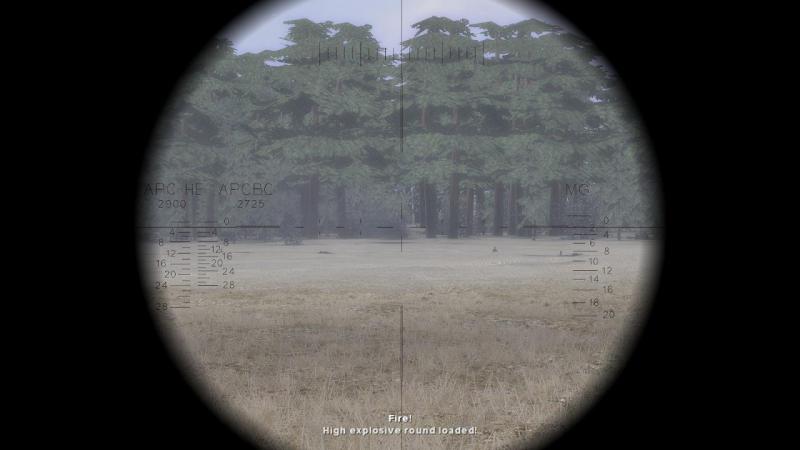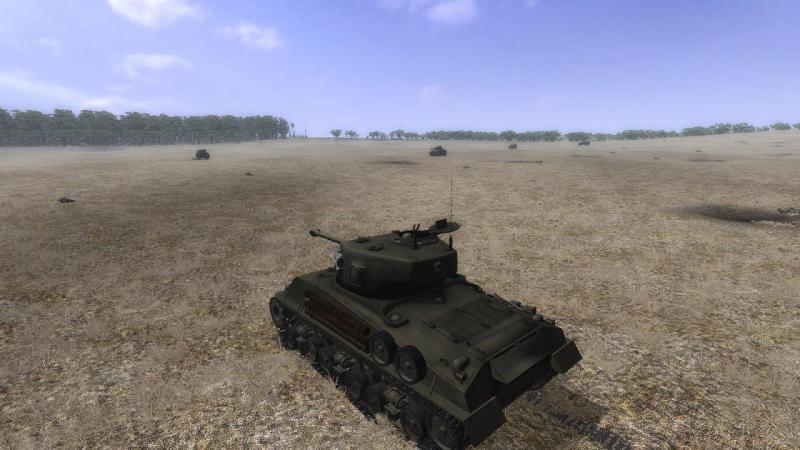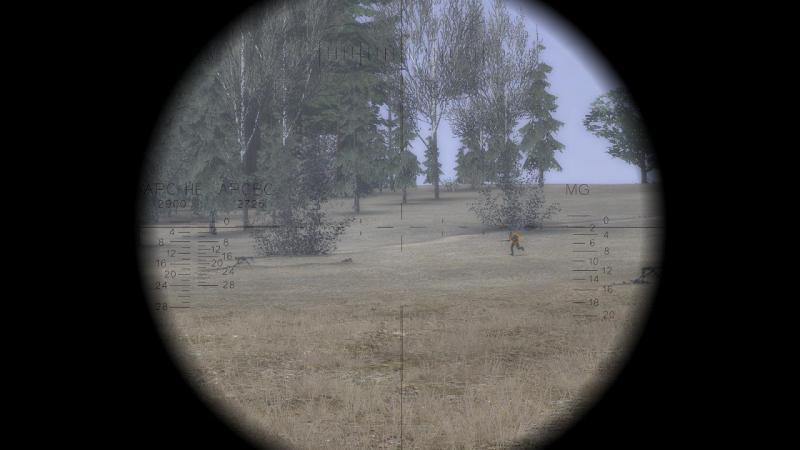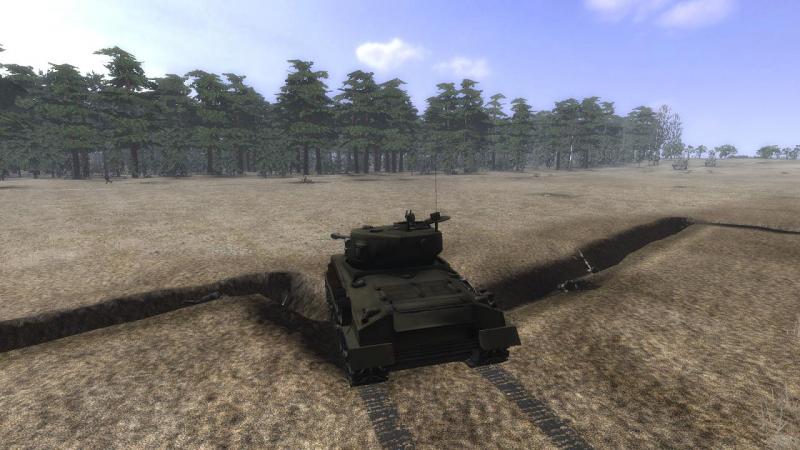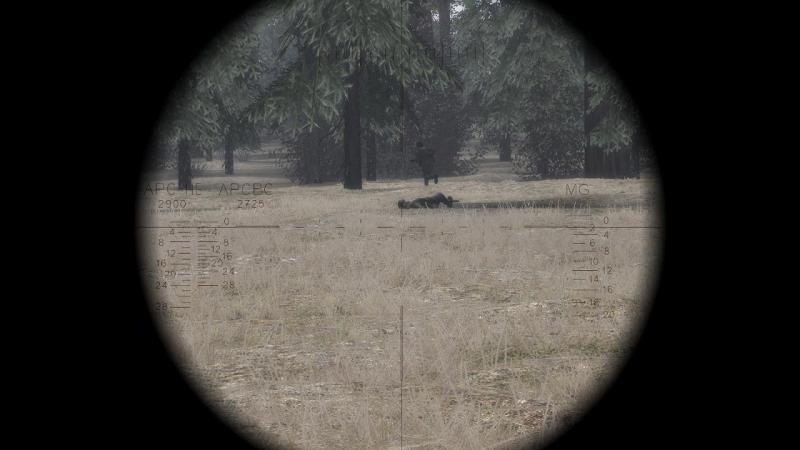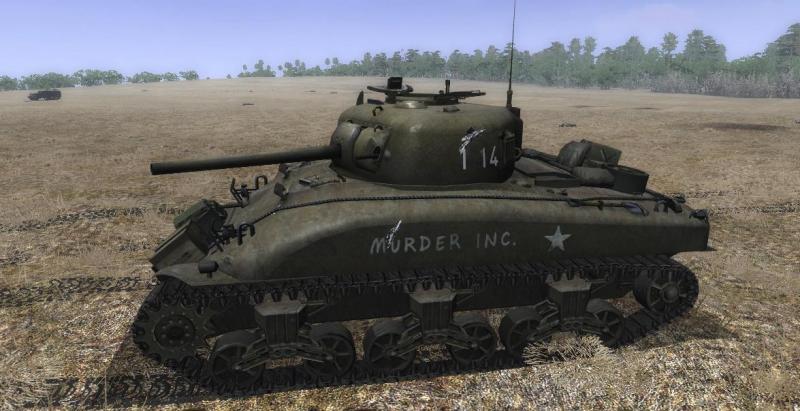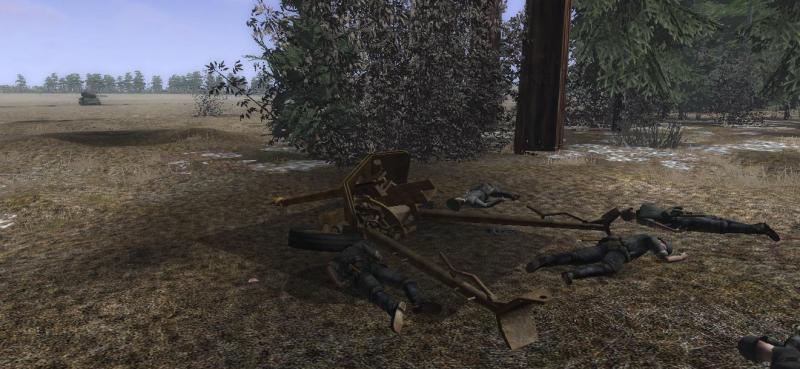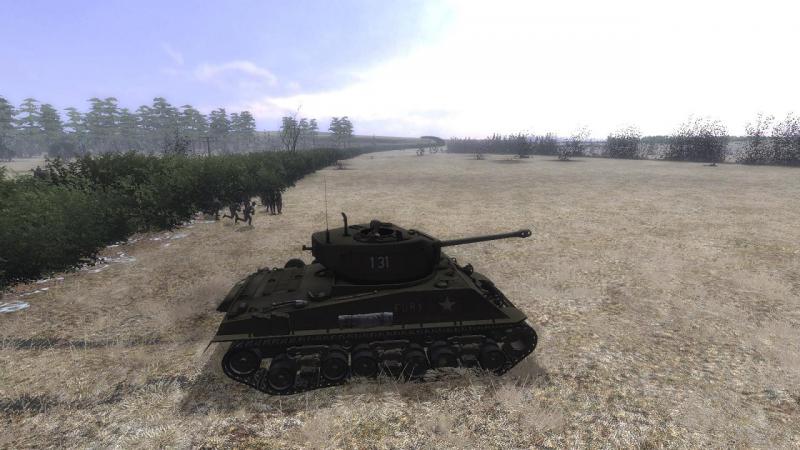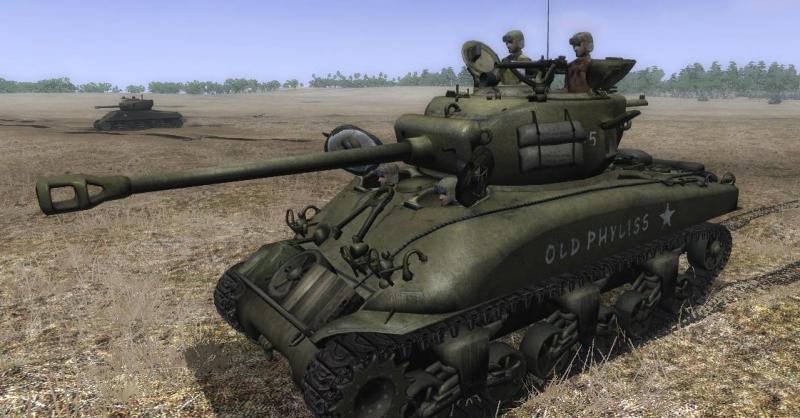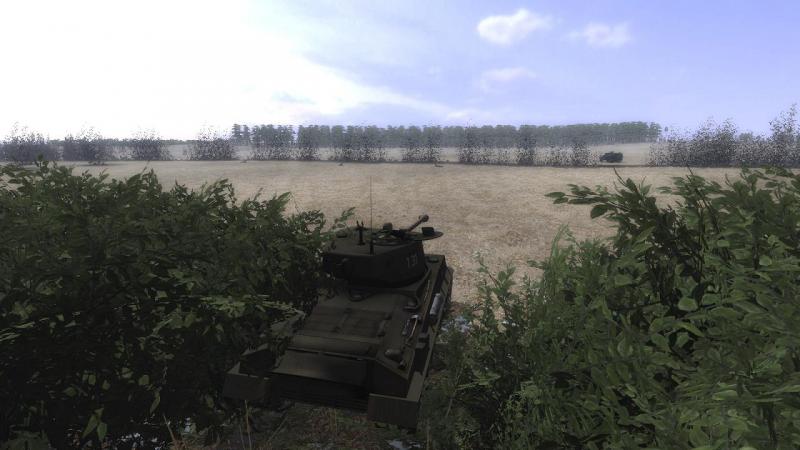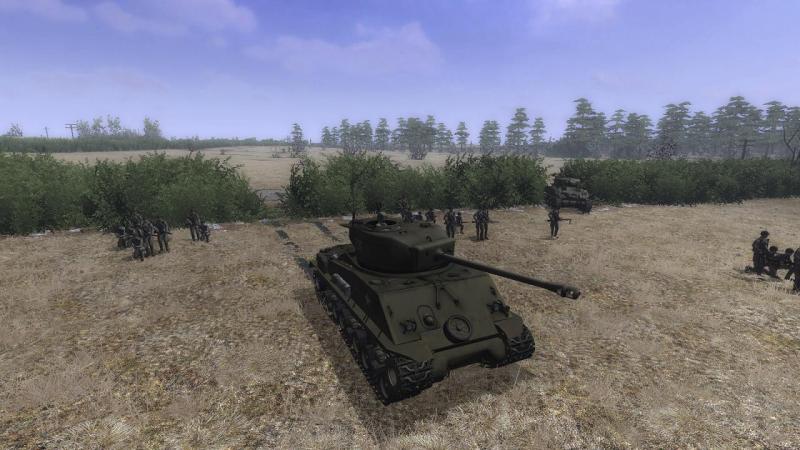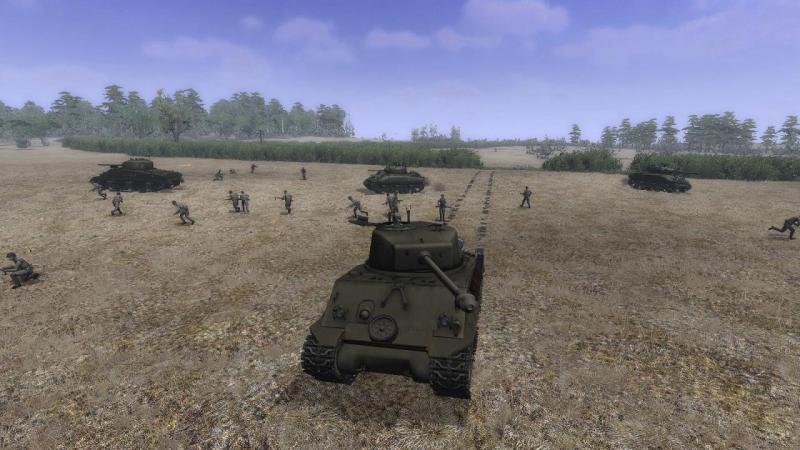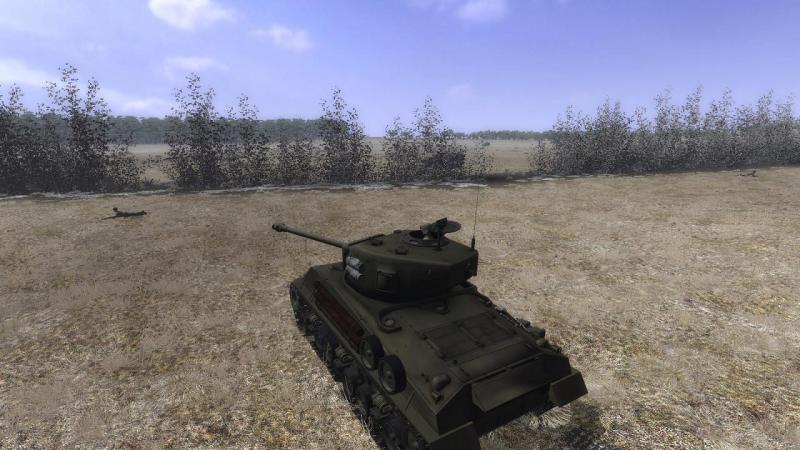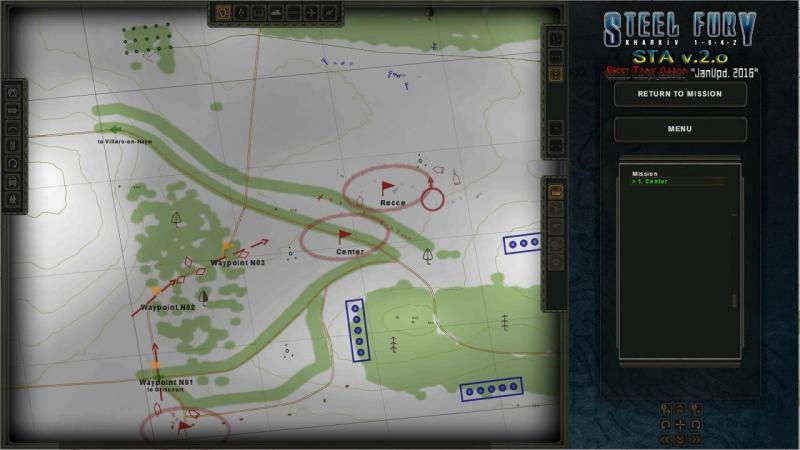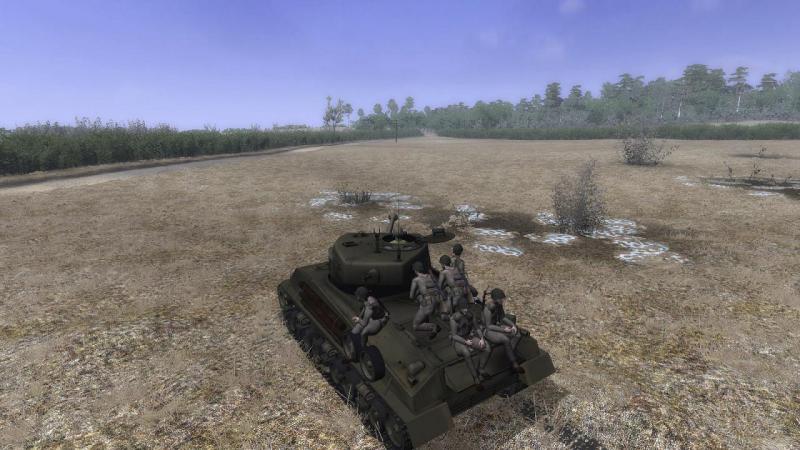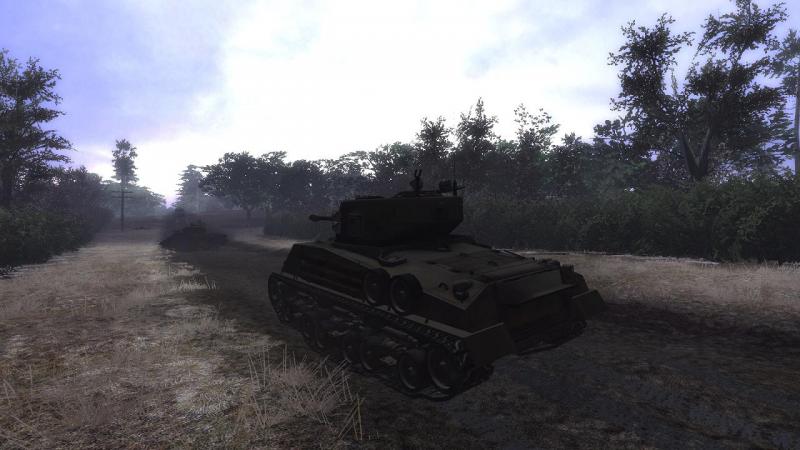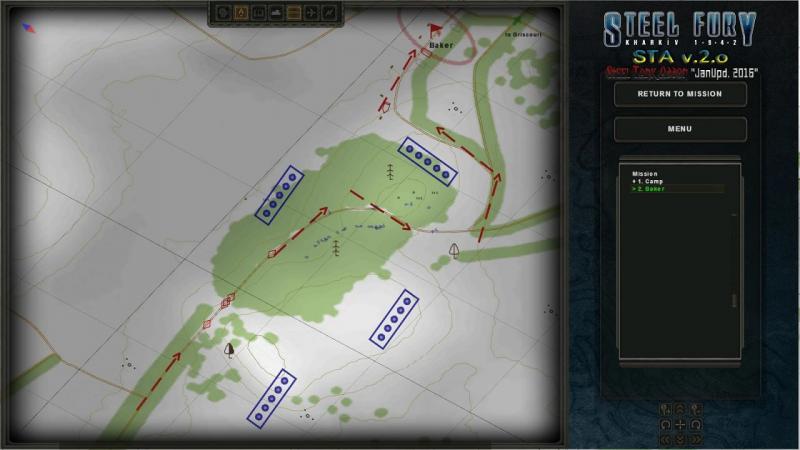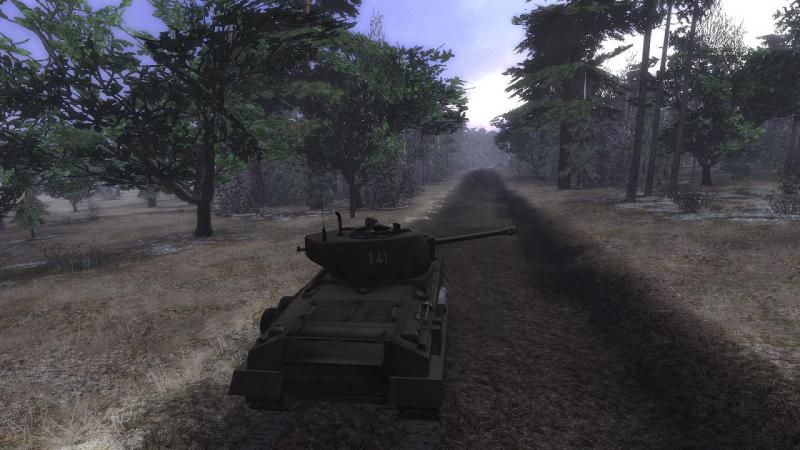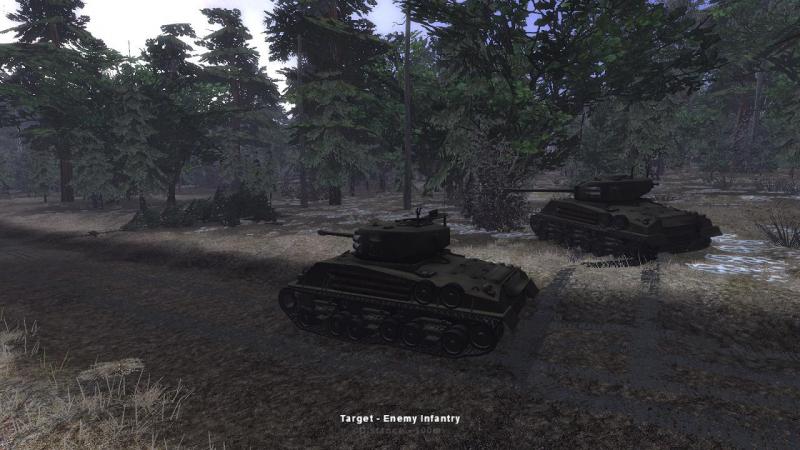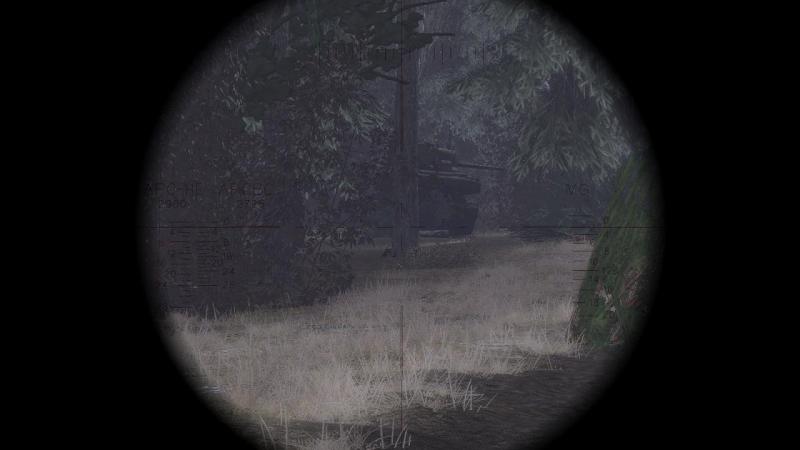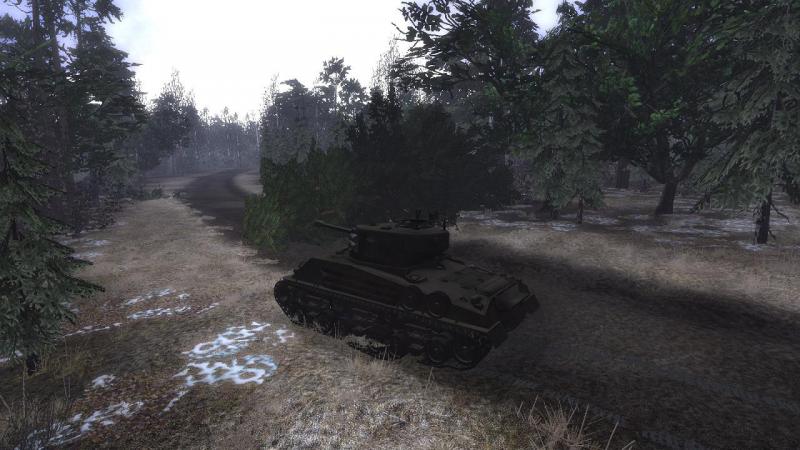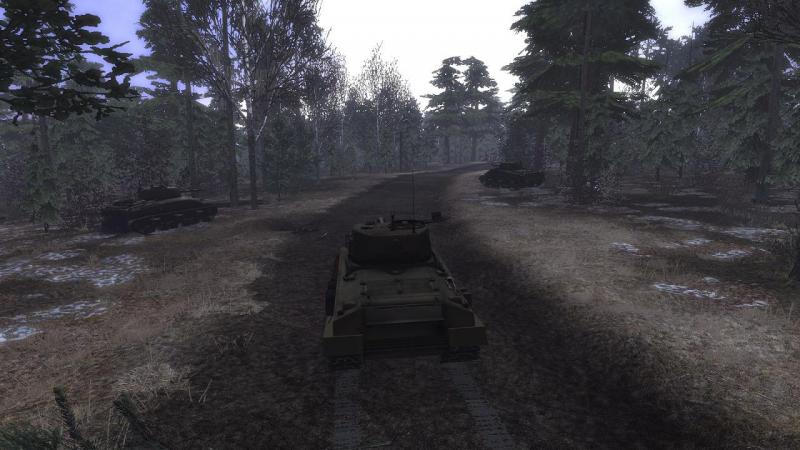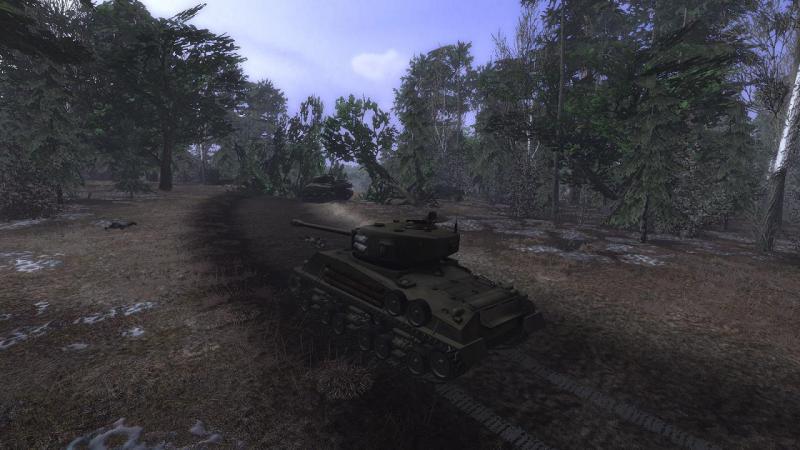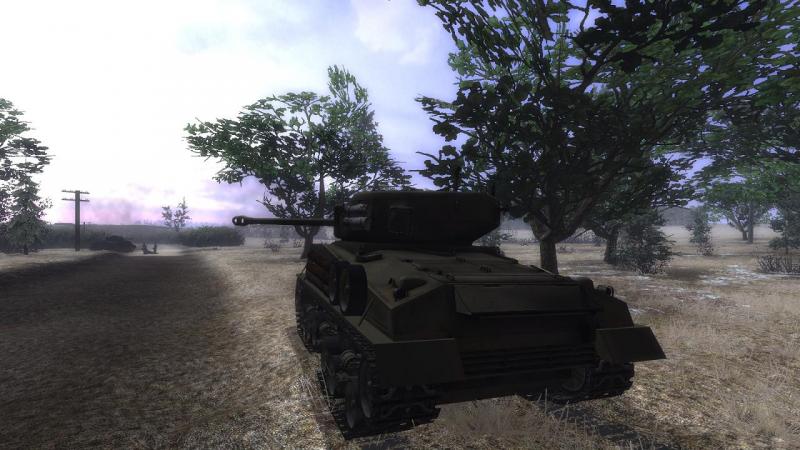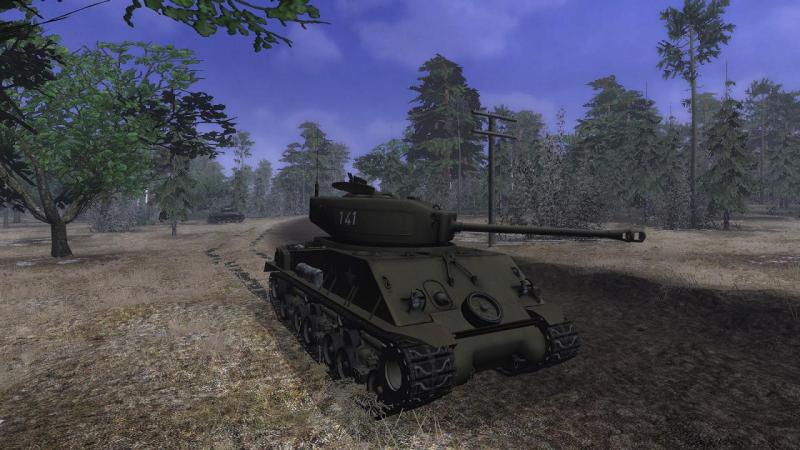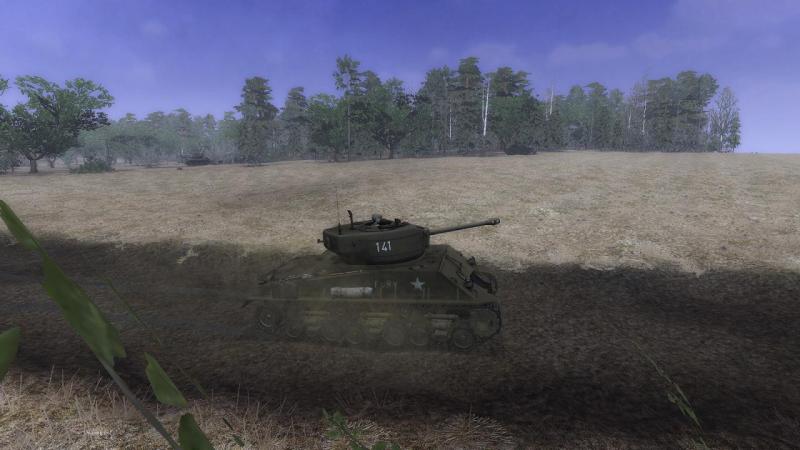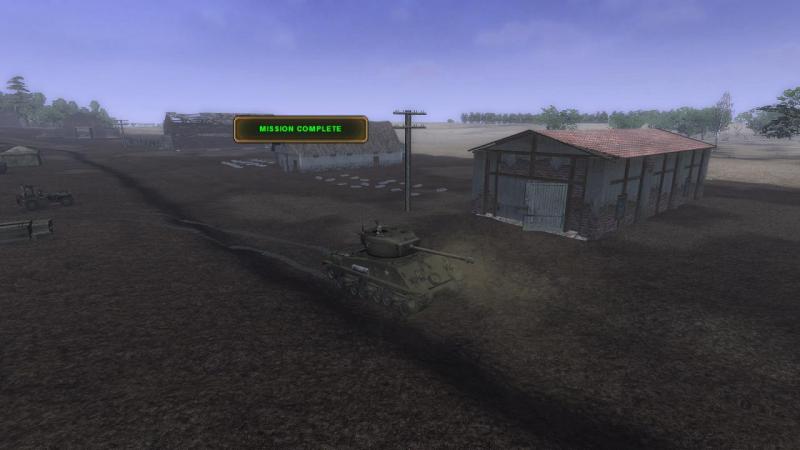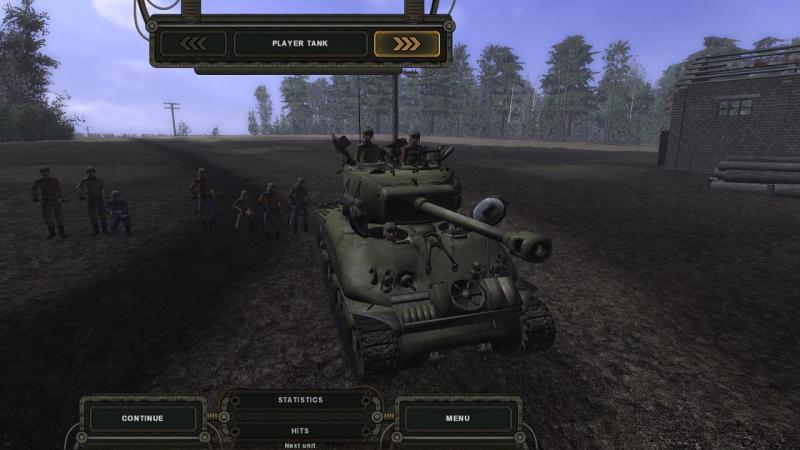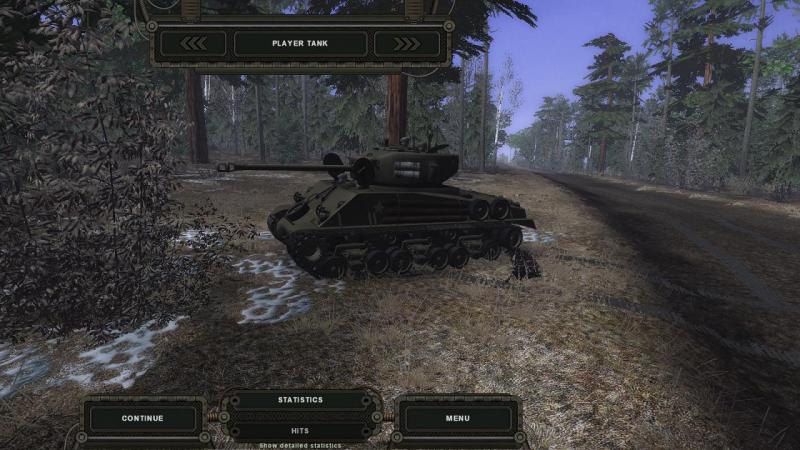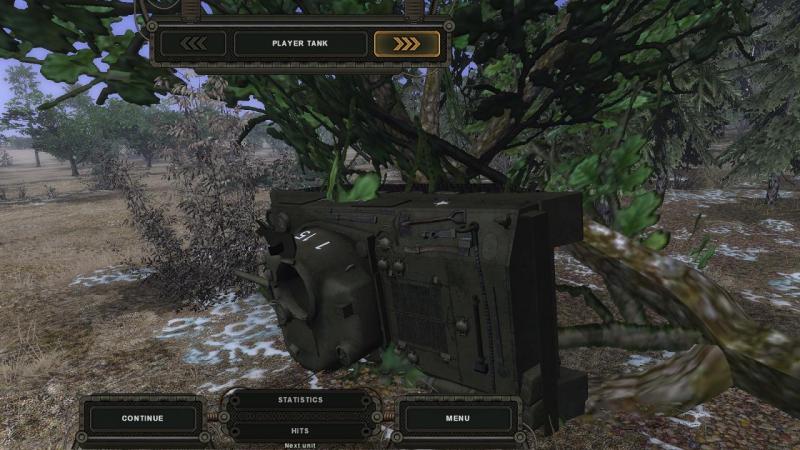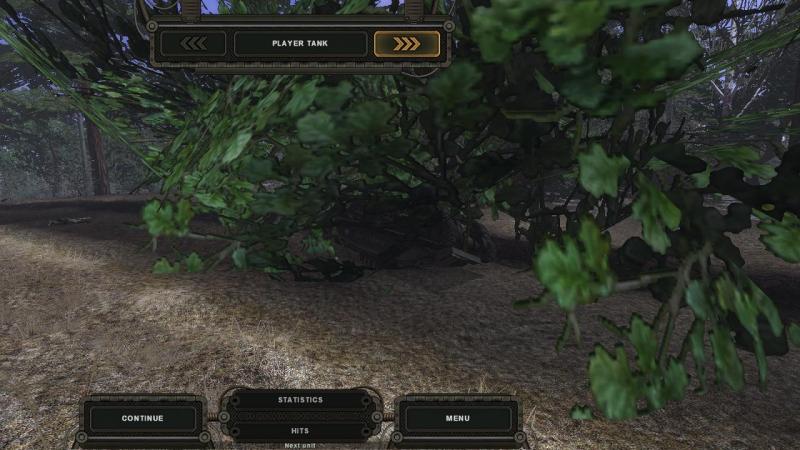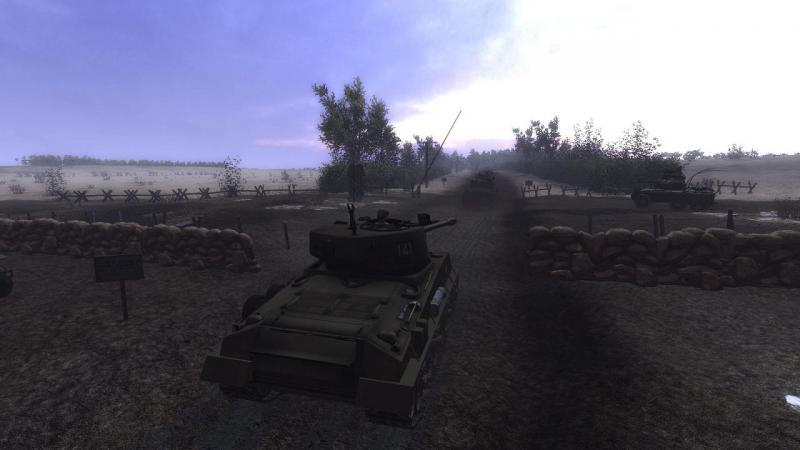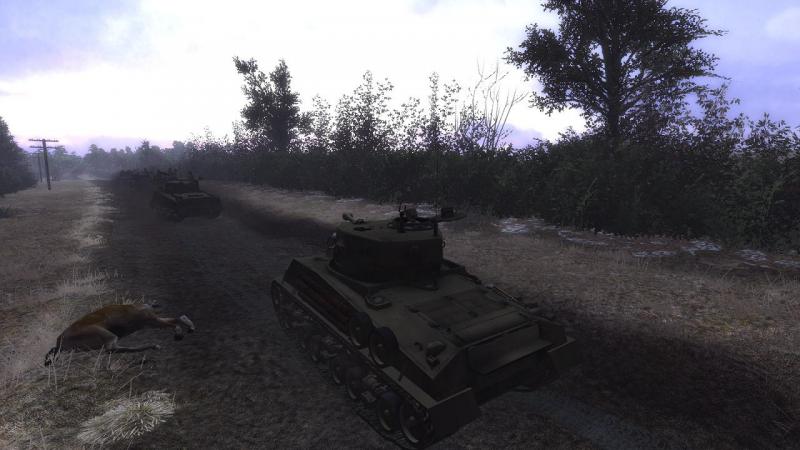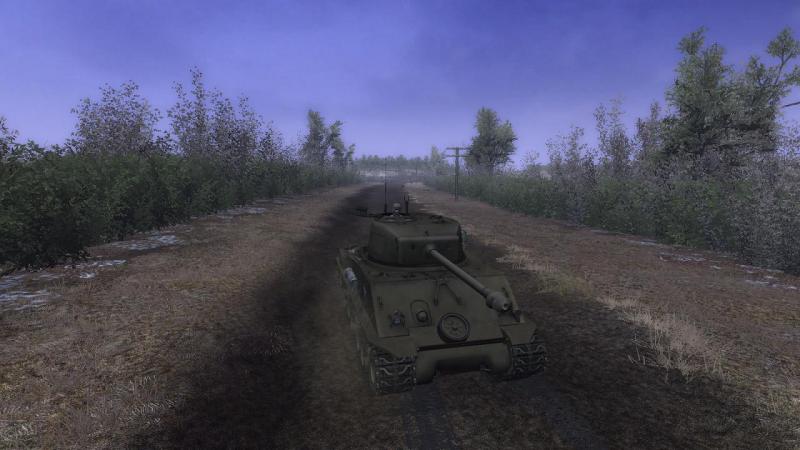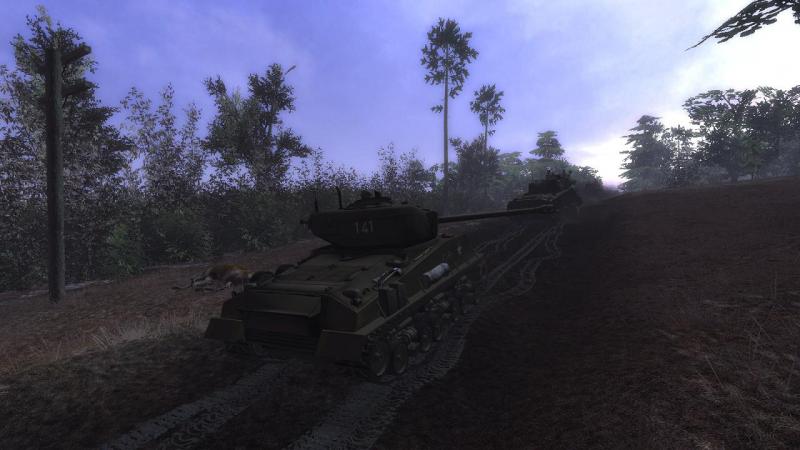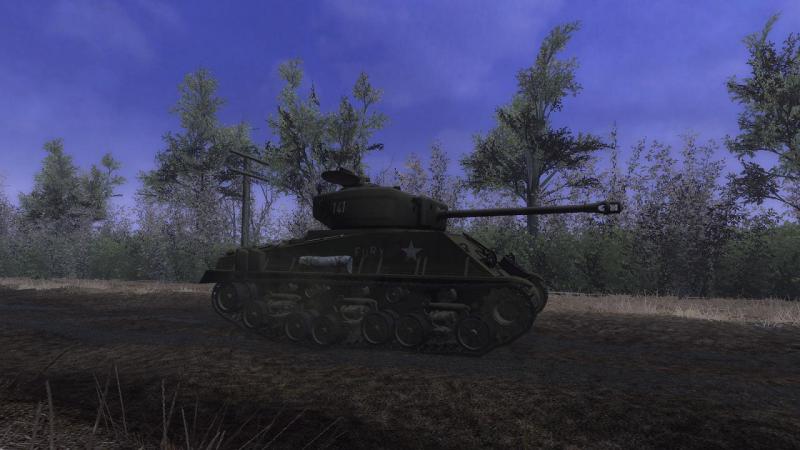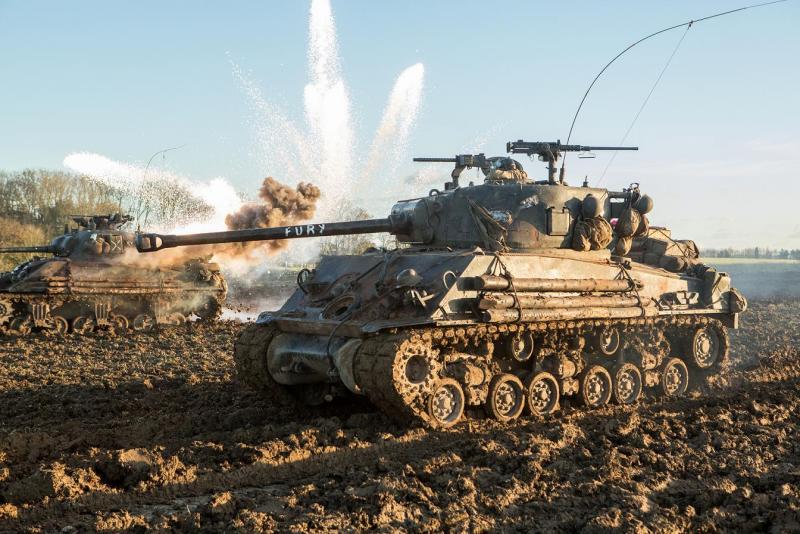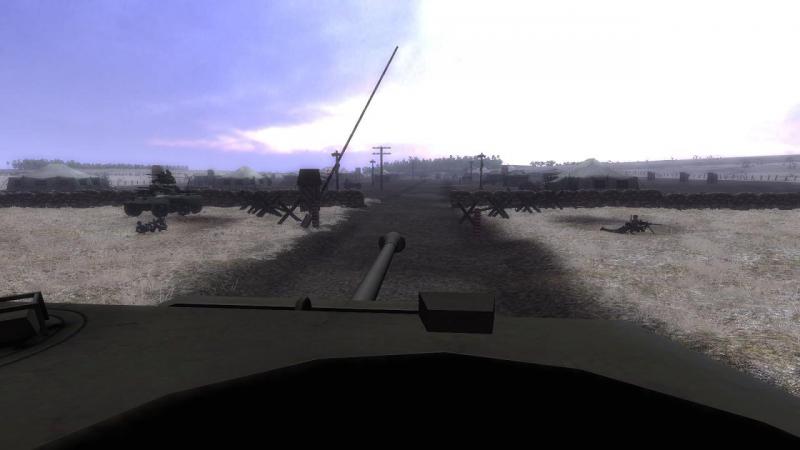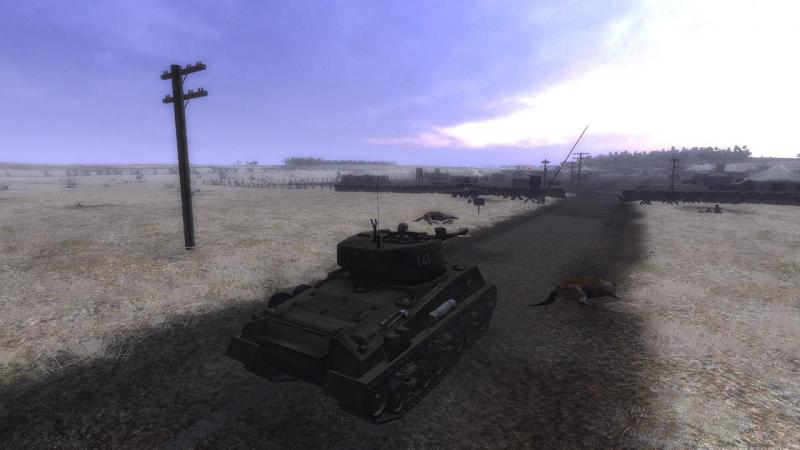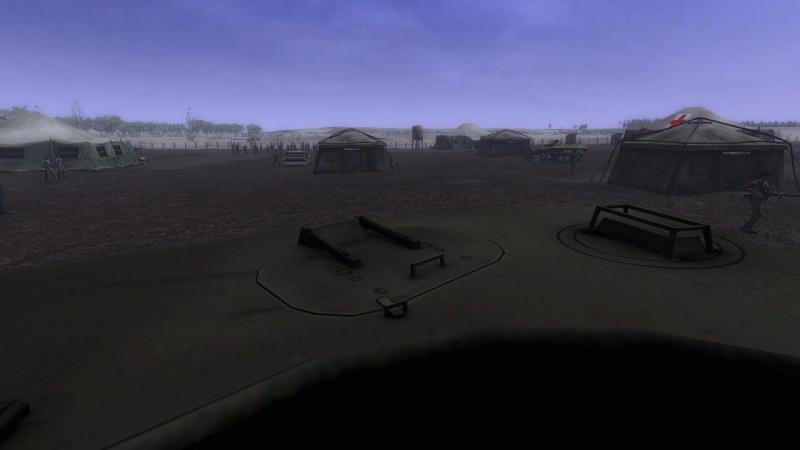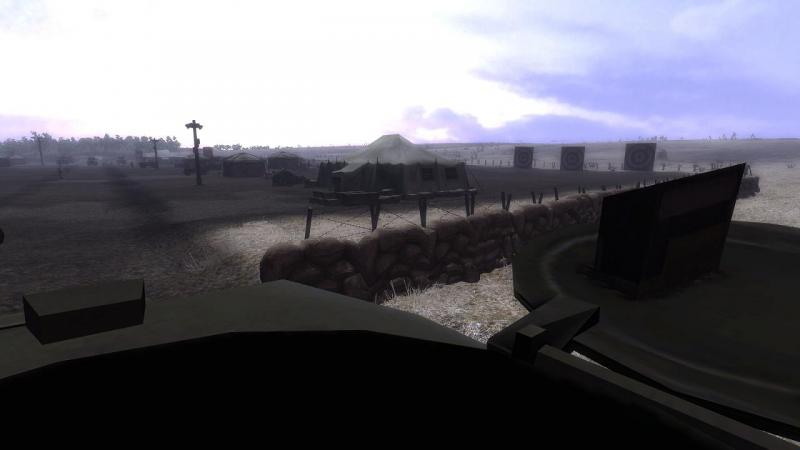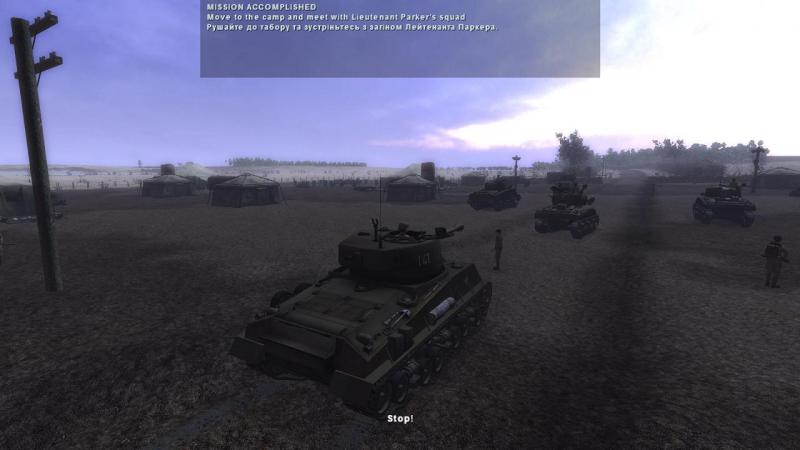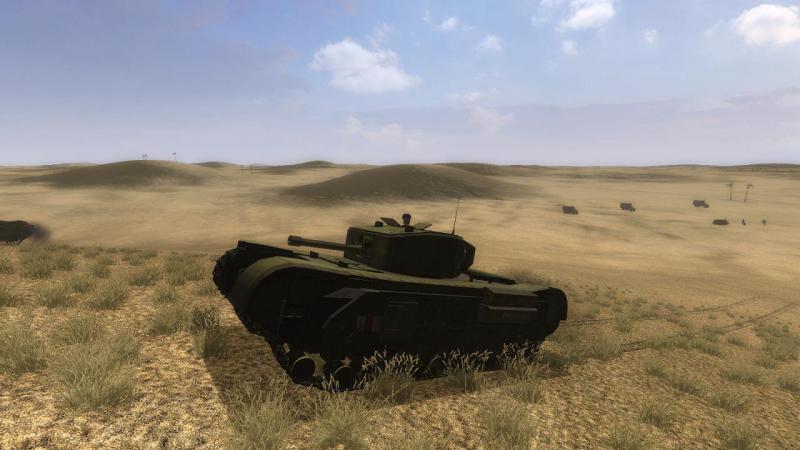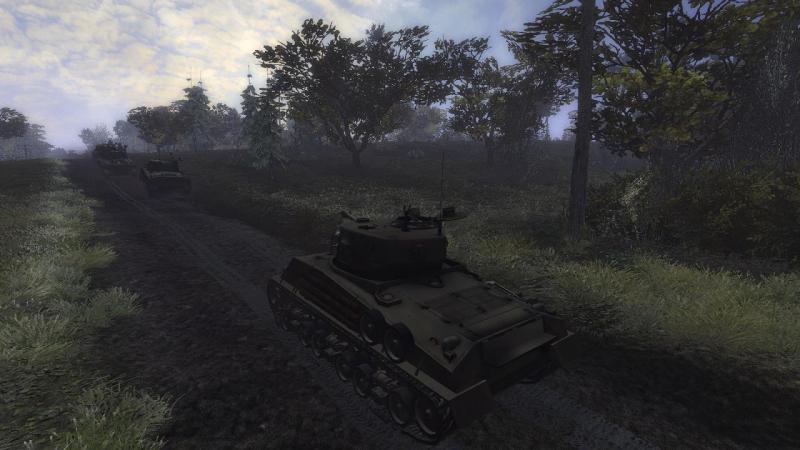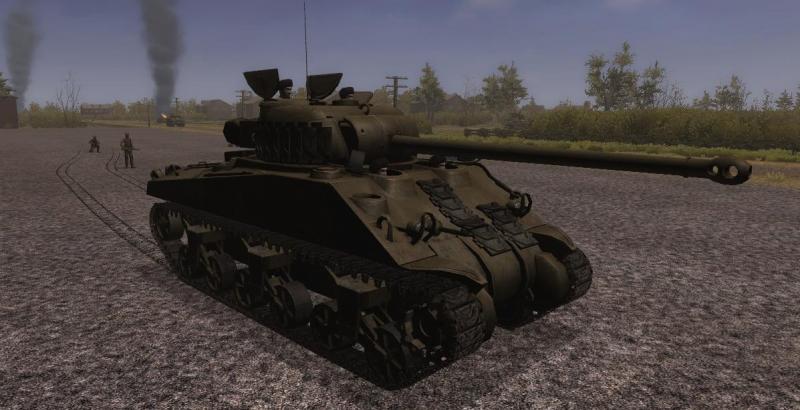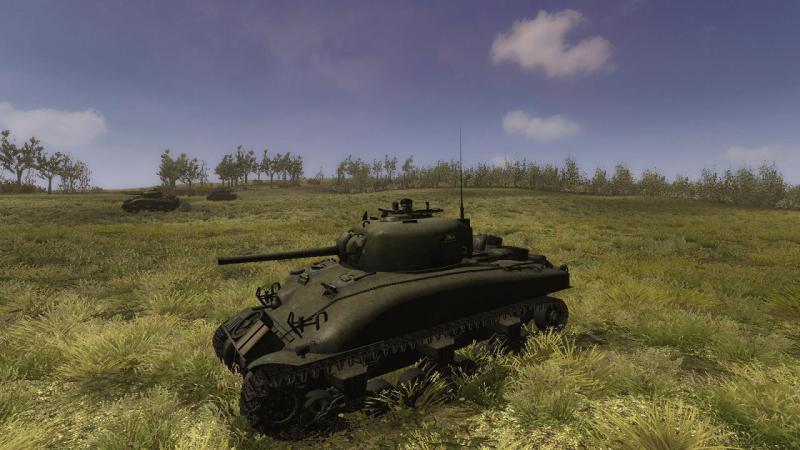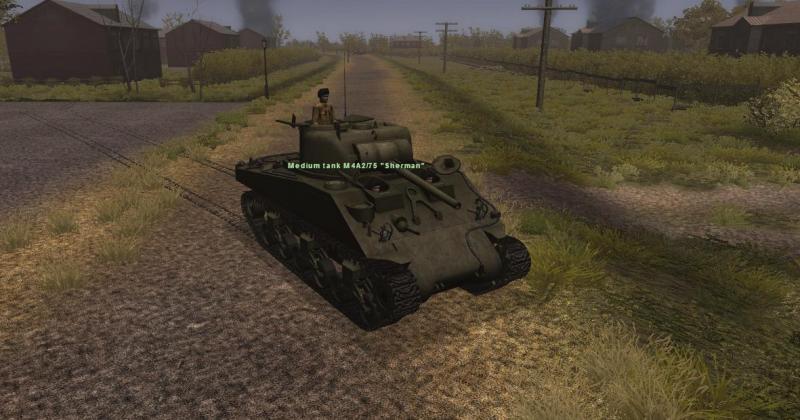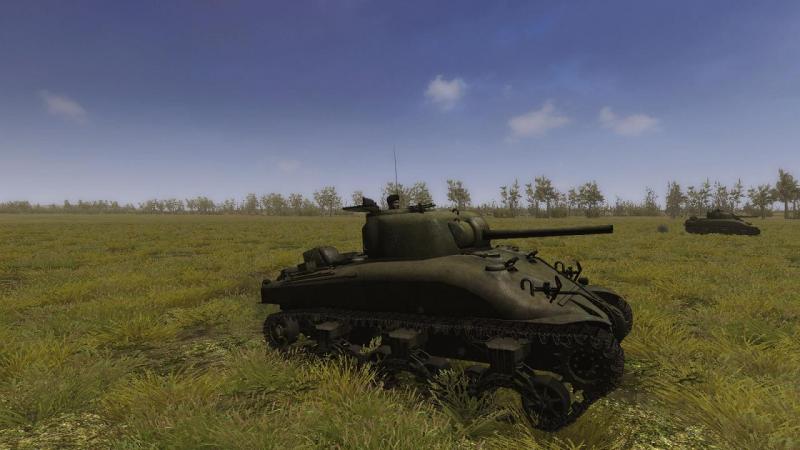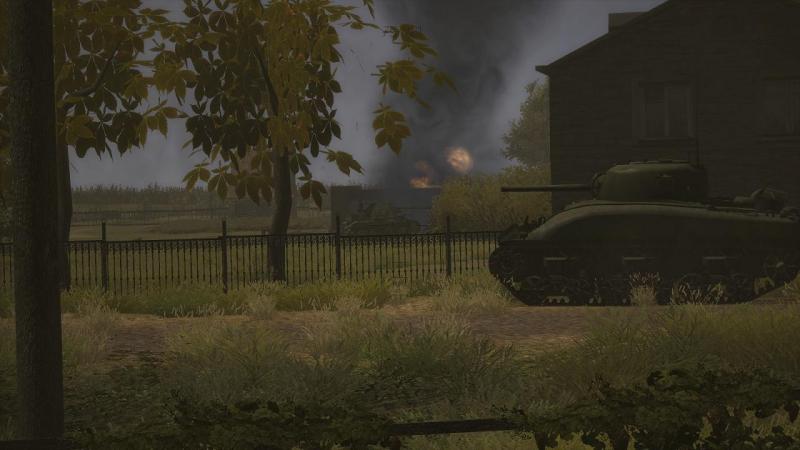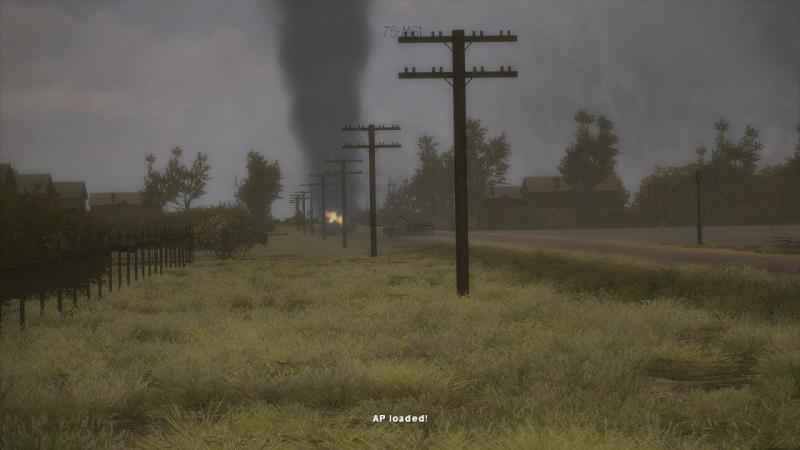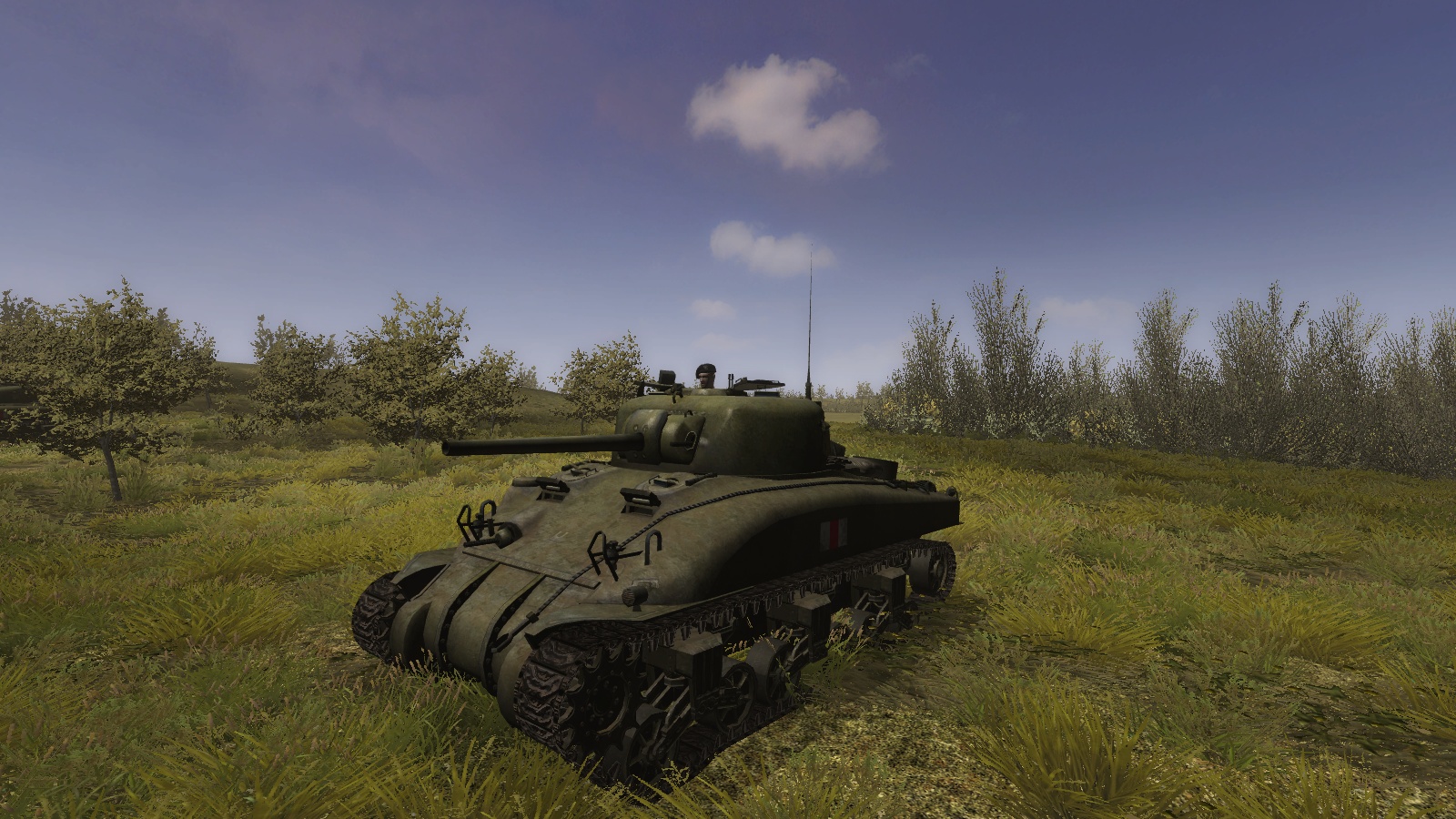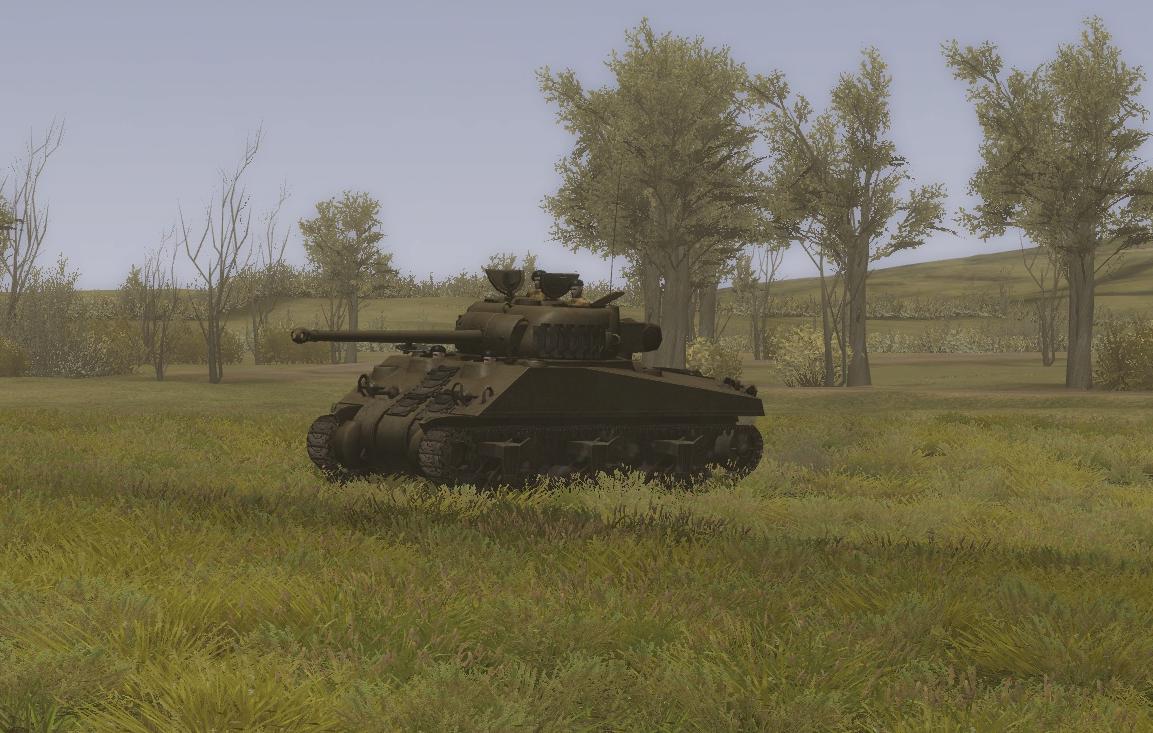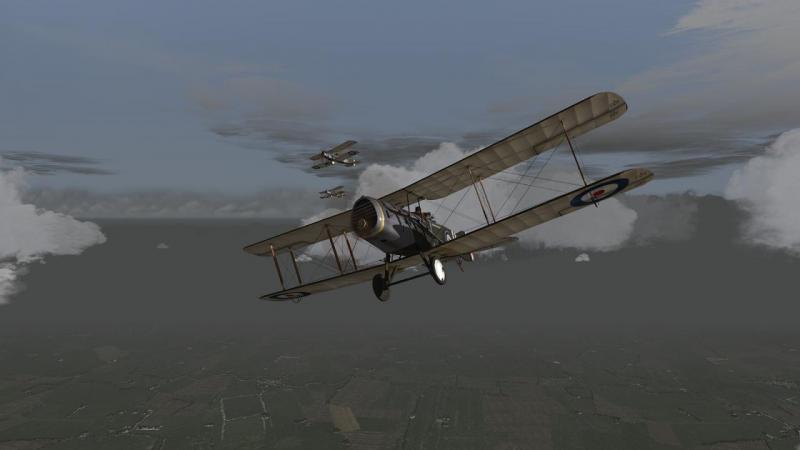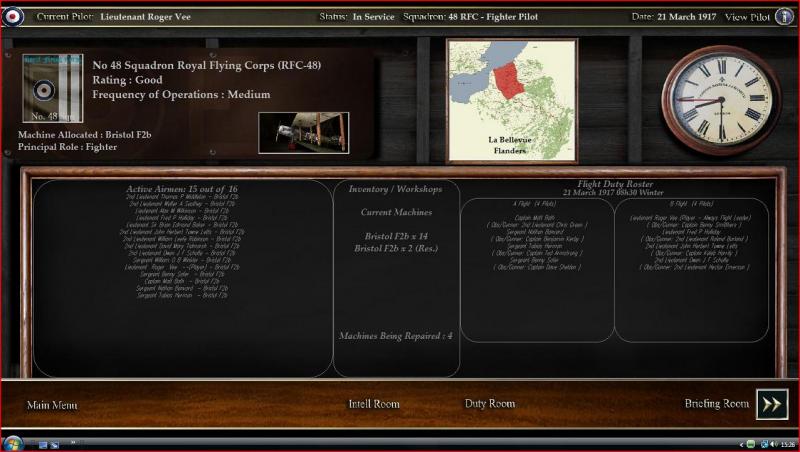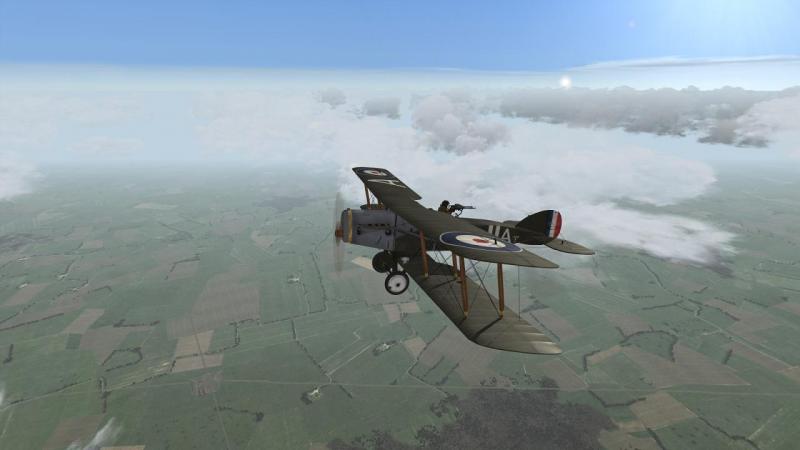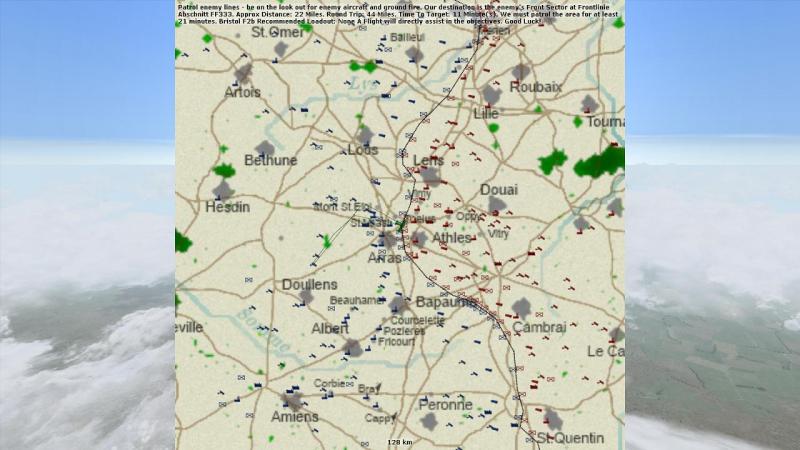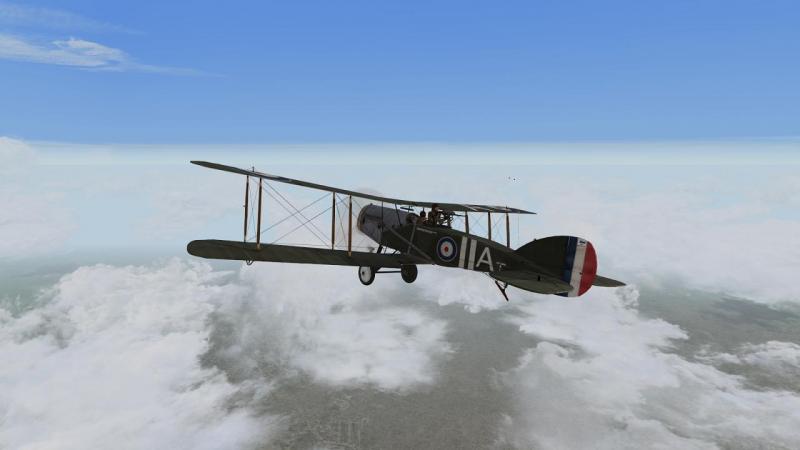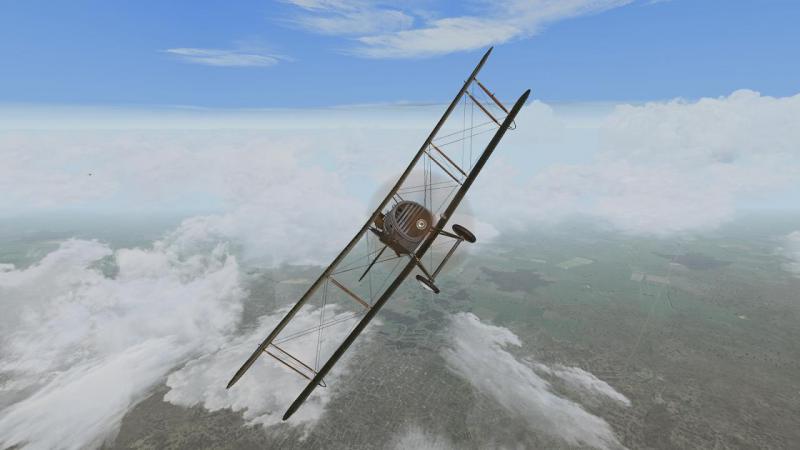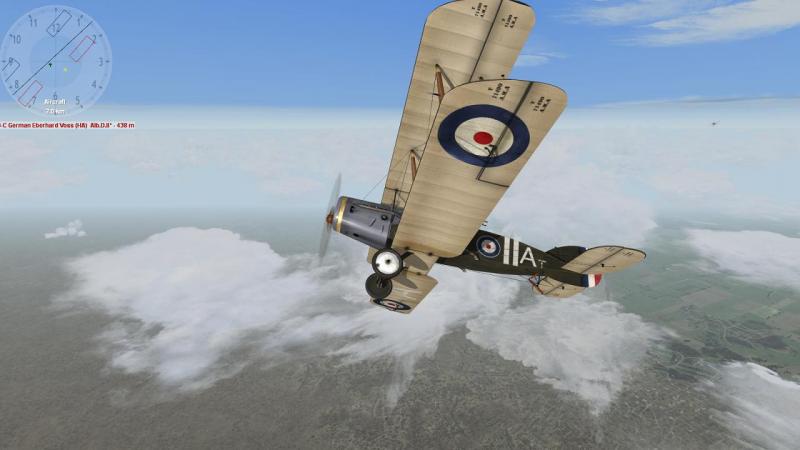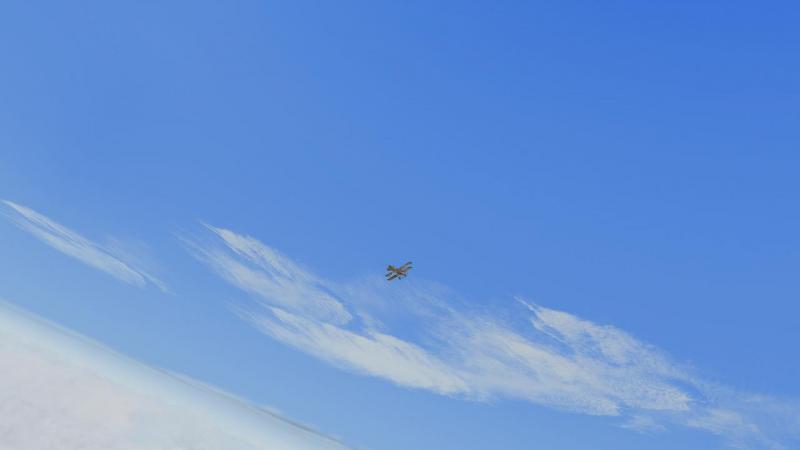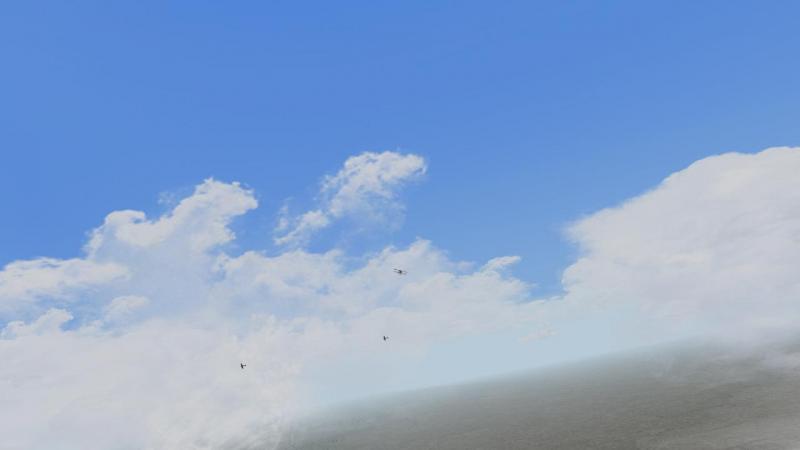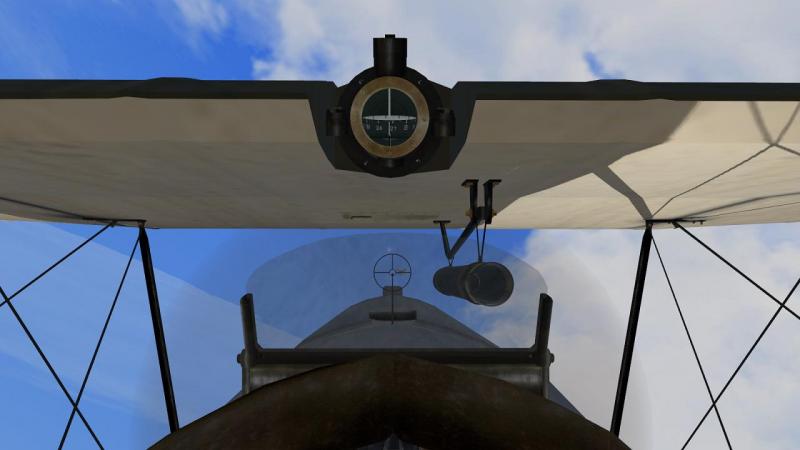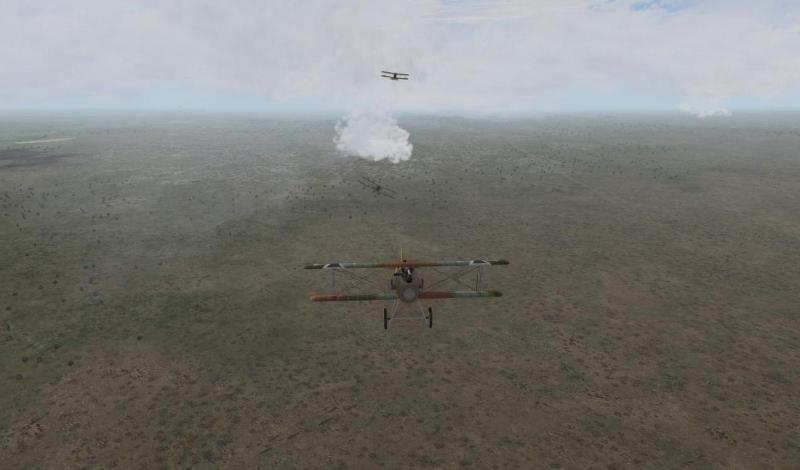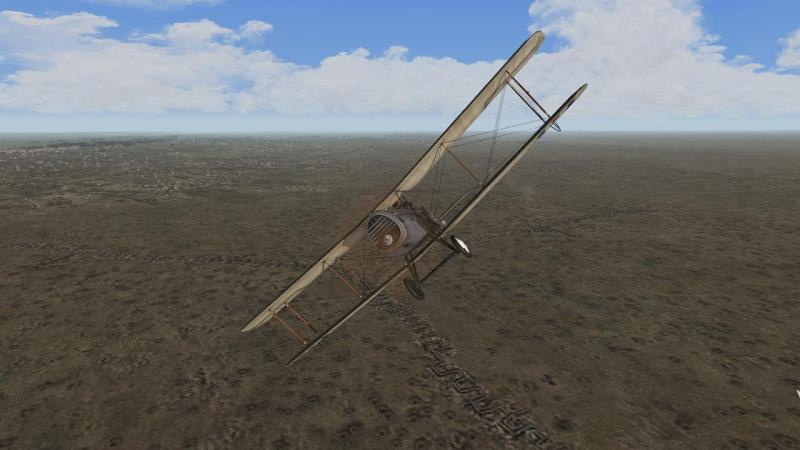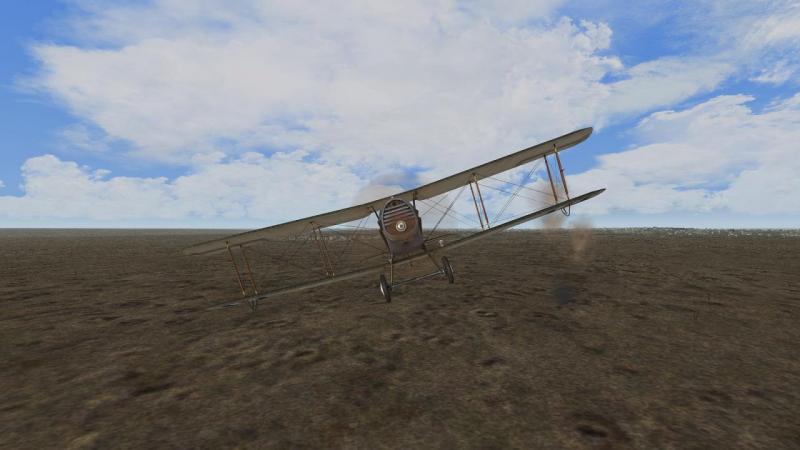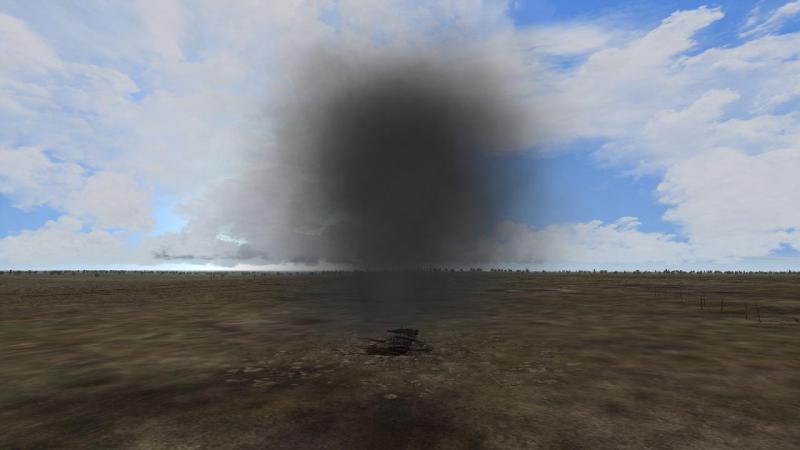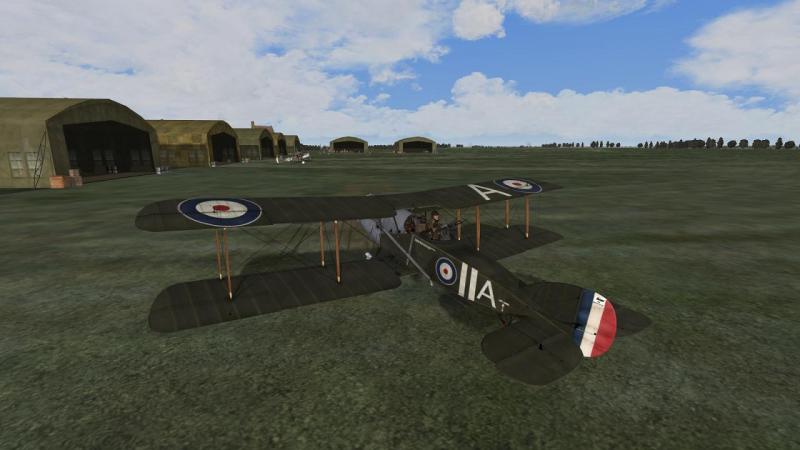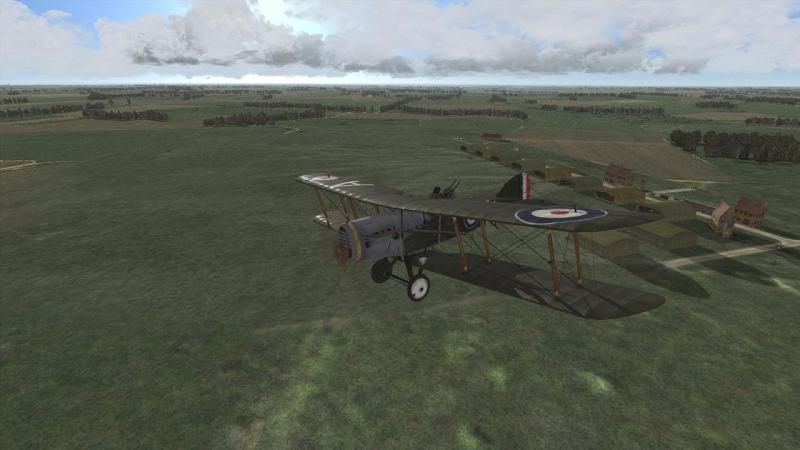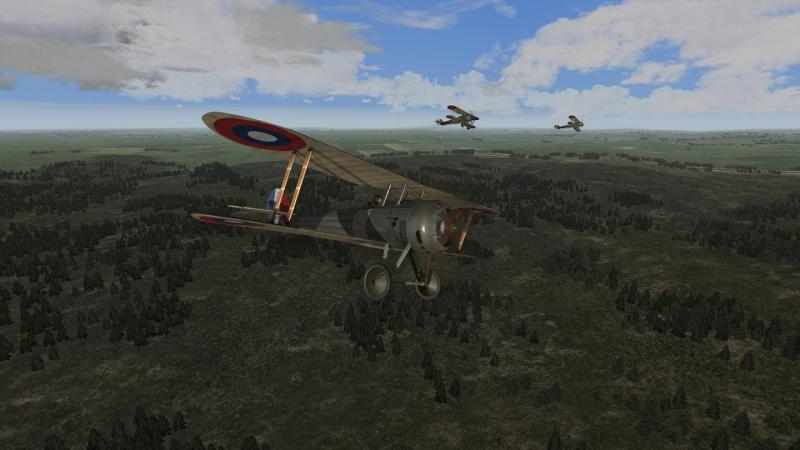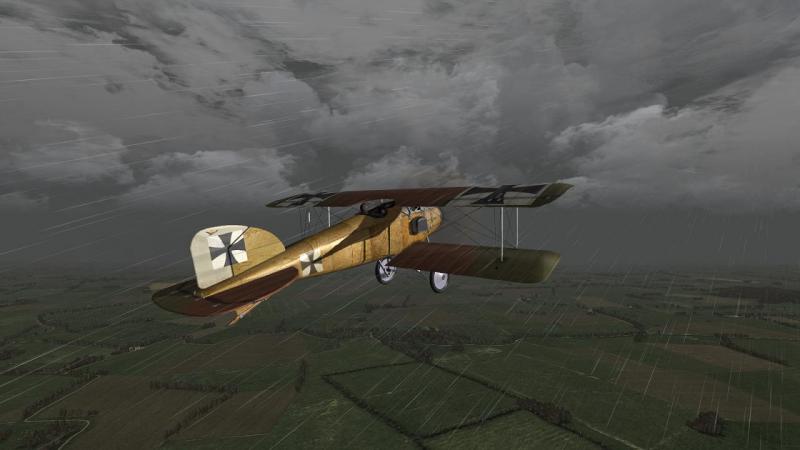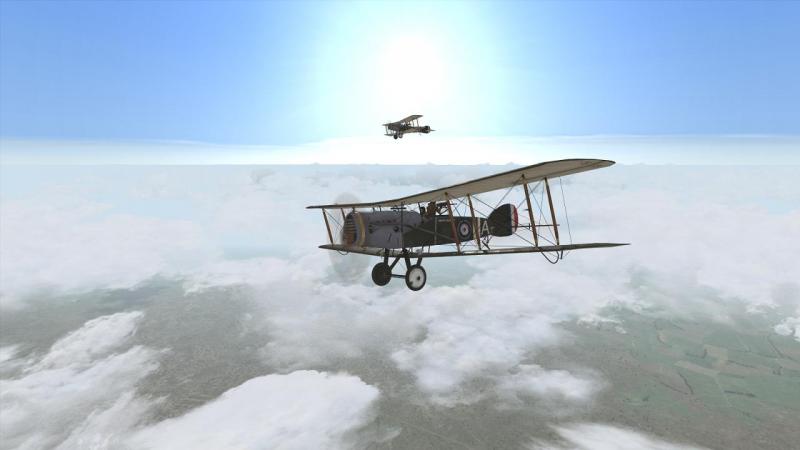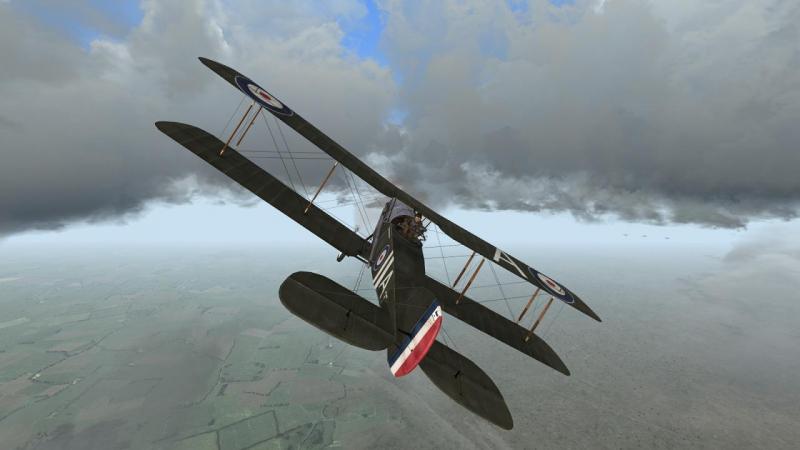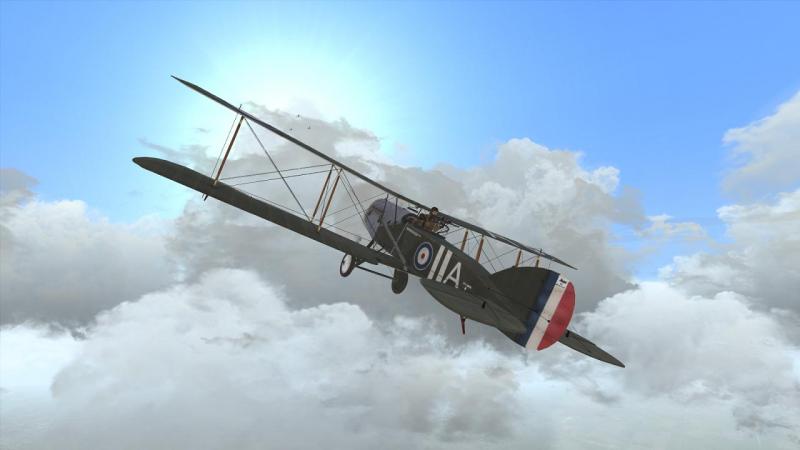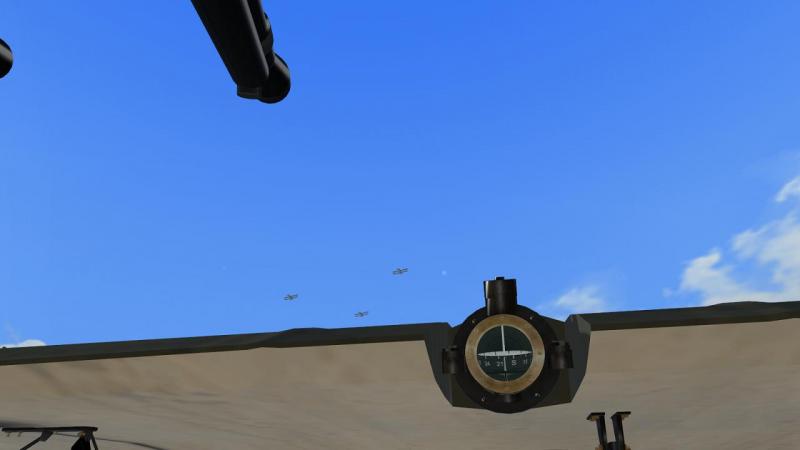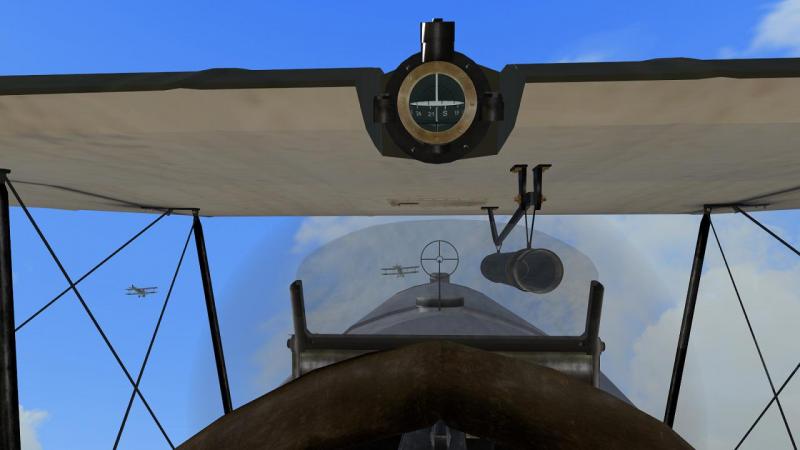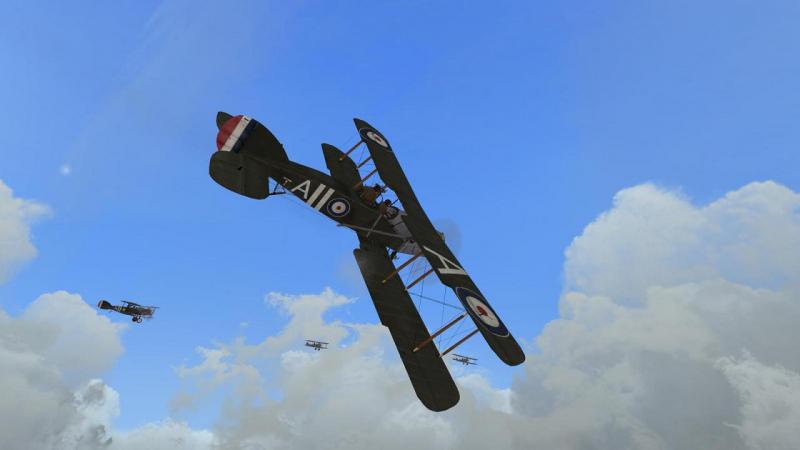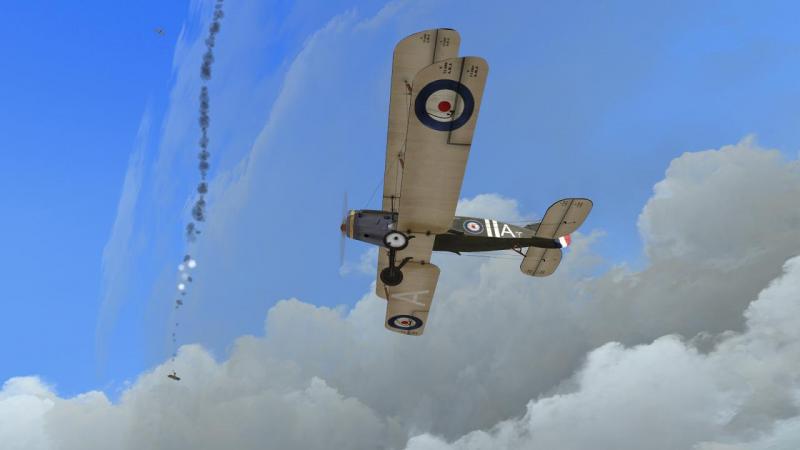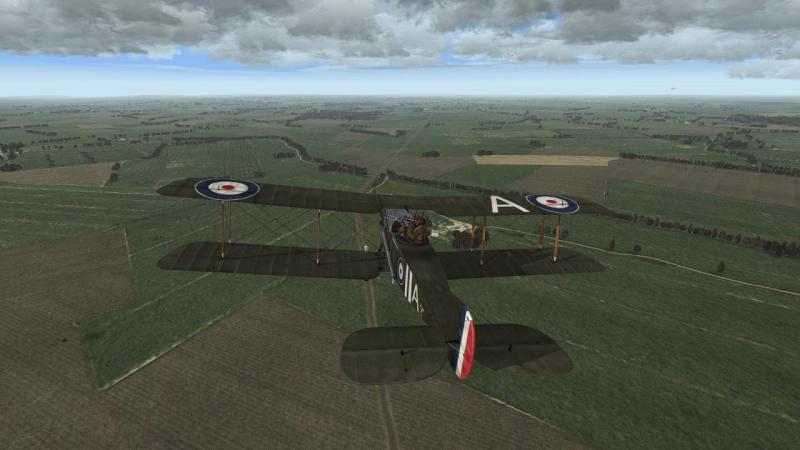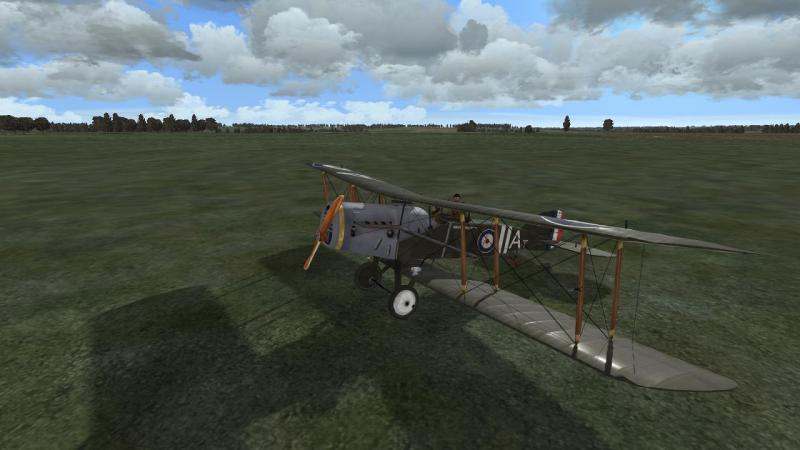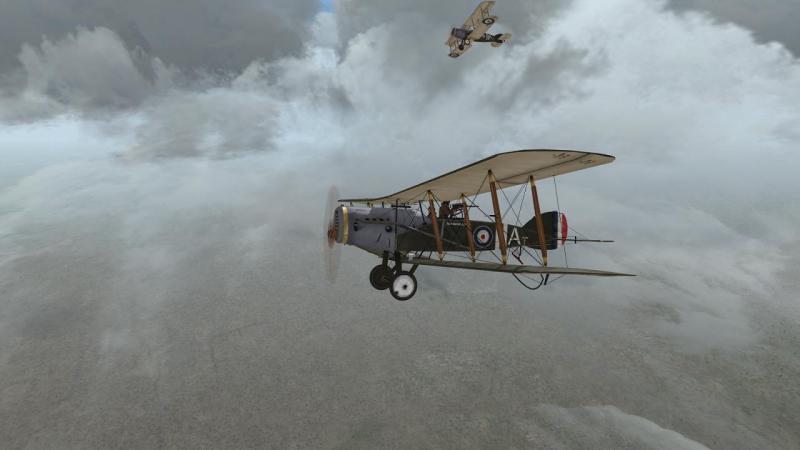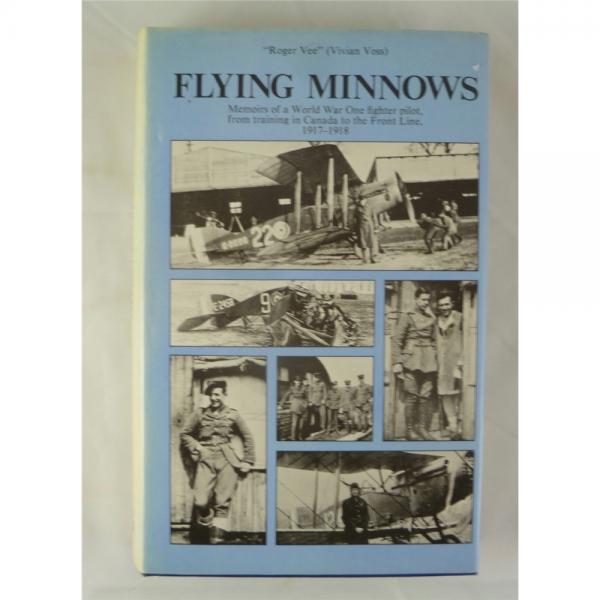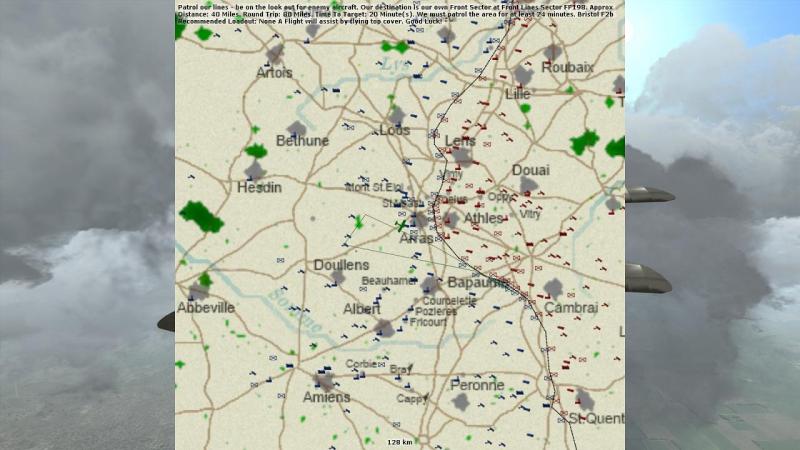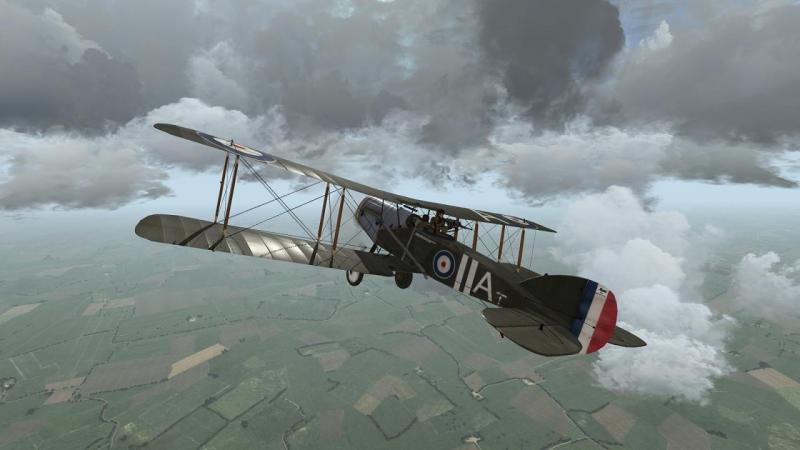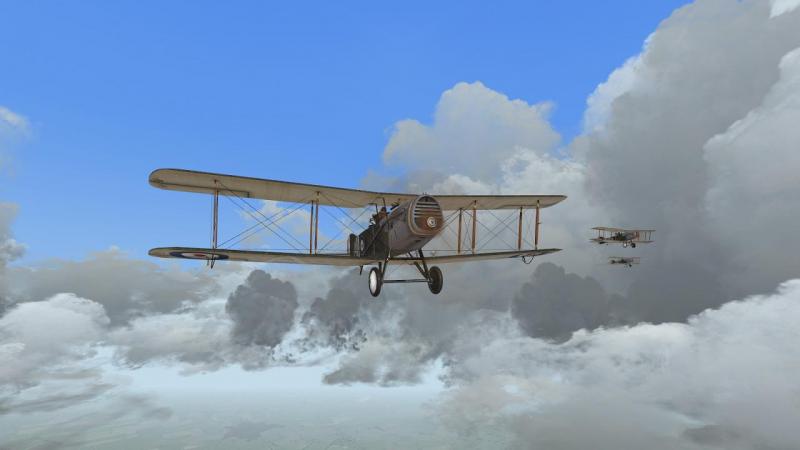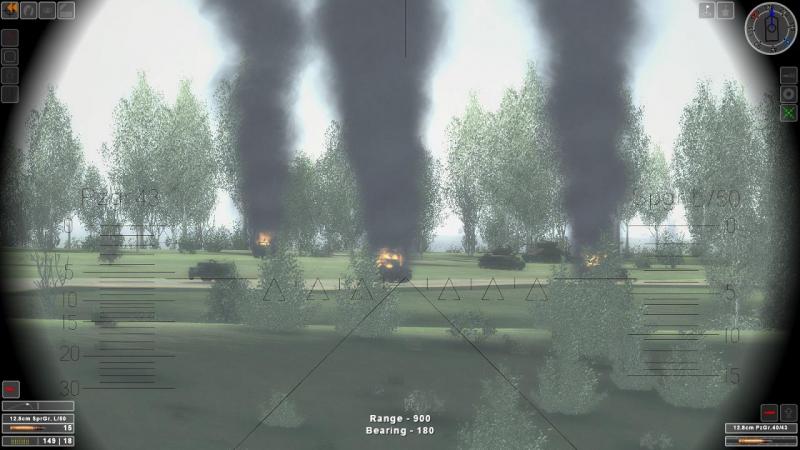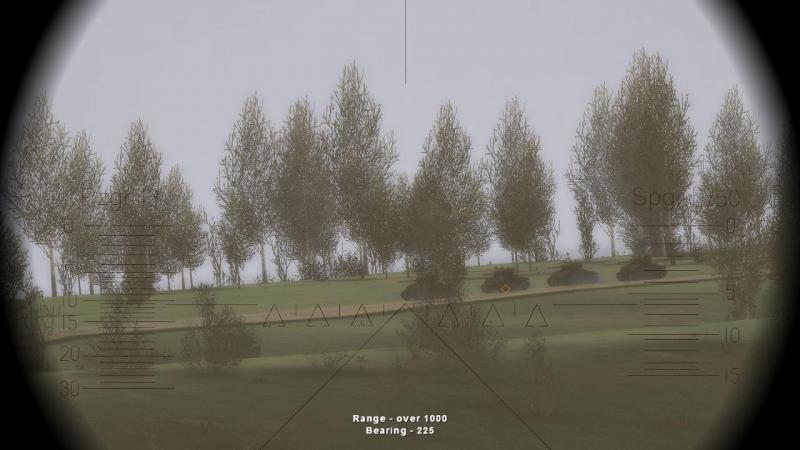-
Posts
3,749 -
Joined
-
Last visited
-
Days Won
7
Content Type
Profiles
Forums
Gallery
Downloads
Store
Everything posted by 33LIMA
-

Atlantic Fleet - admiral Graf Spee, Battle of the River Plate, December 1939
33LIMA posted a gallery image in Member's Albums
From the album: Combat Sims
-
From the album: IL-2 Battle of Stalingrad
-
From the album: IL-2 Battle of Stalingrad
-
From the album: IL-2 Battle of Stalingrad
-

Atlantic Fleet PC/Mac Edition Available
33LIMA replied to dsawan's topic in Naval Combat Information Center
Thanks for the heads up! Just grabbed it. As I expected, I REALLY don't like the stacatto 'You move-You shoot-They move-They shoot' sequence, complete with 'freeze frames' in between, which smacks of a throwback to paper wargame rules and really jars [EDIT - after a couple of days playing AF, this has ceased to bother me]; likewise having to range manually, instead of having the option to designate targets and letting your AI gunnery people do the rest is a gap in the simulation [EDIT - again, after playing for a while, it would be good to be able to designate targets for an AI 'Gunnery Officer', but the ability to do it yourself is actually fun rather than a chore, and the tools provided are actually quite sophisticated]. But it's cheap as chips, has a shedload of historical ready-made battles, and the ships and visuals look wonderful. HMS Glowworm, April 1940, about to run into Kriegsmarine units supporting the German invasion of Norway: Hipper and Z-28 about to engage... ...and the results, a straddle as I turn away at full speed, before starting to zig-zag: Looking forward to getting to grips with this! -
Lockie looks after hosting; I asked him, and he's no plans to change from 4Shared, which I find fussy but works for me provided I click the correct d/l option, as described here under 'HOW TO DOWNLOAD FROM 4SHA1rED': http://stasf2008.ephpbb.com/t6-steel-tank-add-on-steel-fury There's no ETA yet for STA 2.0, in which these missions are built. ATM there's a test version, available on application for the password, which is currently sufficiently stable that it's the only version of SF that I play now. The Fury missions need STA 2.0 plus the latest available updates. . http://stasf2008.ephpbb.com/t610-sta2-0-testing 'Fury' mission 3, based on the fight in the town, is now available and the next one, Lockie is already working on: http://stasf2008.ephpbb.com/t288p120-campaign-fury-m4a3-76-e8-wip
- 8 replies
-
- steel fury
- sta
-
(and 2 more)
Tagged with:
-
Good bye, Lucy Sue...? The next few minutes were all a bit hectic, confused even. I was at the gunner’s sight and stayed there. Having hit contact, what I should perhaps have done was play the platoon commander part, first – re-assess the situation, make a plan for the whole platoon and give the necessary orders. I suppose I had sort of done that, by dismounting the troops and advancing in line towards the enemy – initiating an advance to contact. The AI in SF are pretty aggressive and you can’t and don’t generally need to order ‘hold fire’ or fire at will’. So if you’re attacking, and you line ‘em up and lead ‘em off, you can let your troops take it from there, intervening only if necessary. Which is what I had done. It’s just that once you’re shooting at or scanning for targets in a two-way firing range, it’s kind of hard to keep track of much else...like when it might be necessary to intervene, to ‘regain control’ of your platoon. Which in practice, usually means reining in a buddy who doesn’t share the opinion of the French general who observed after the Charge of the Light Brigade, ‘’C’est magnifique, mais ce n’est pas la guerre.’ I got a strong hint to that effect when, scanning again, I saw another Sherman - tank name, Lucy Sue - had broken formation and was closing upon the enemy, in typically aggressive SF AI fashion. Unfortunately, SF platoon-mates are a bit too ready to leave formation and attack, in this fashion. This would not be so bad, but for the fact that SF doesn’t have hotkeys for even the relatively few platoon orders you can issue – you have to quit the 3-d view and go to the map screen. And even if you do that, for as long as they see something they consider worth charging, SF’s aggressive AI seem inclined to ignore you. So I left Lucy Sue to it, for now. Ok, we can still work together on this thing. If he (or rather, she) was moving, then I should be shooting – ‘No fire without movement, no movement without fire’. About this time, one of my other tanks - one of the 75mm versions, 'Murder Inc', 'came on the air' to report he was under fire (SF doesn’t do platoon radio traffic, so these were scripted messages Lockie had designed in – must fire up the Mission Editor and check out how he did that!). My tank commander called in an A/T gun and from the halt, I picked up on what looked like the shield of the gun, nestling against the base of a tree. A mixture of rapid-fire HE rounds, interspersed with bursts from the co-ax, seemed to do the needful. Then more dug in infantry, concentrating on the MGs for the benefit of our accompanying GIs. Then another A/T gun – I think, it wasn’t easy to be sure. If it was a bush, it had quickly become a dead bush. And you know what they say: the only good bush, is a dead one. Certainly so, when it might be hiding a gun easily capable of punching 75mm holes in your armour-plated ride. One or two of my platoon - I'm not sure which - radioed in that they were hit hard and out of the fight. To paraphrase the comment of a German 88mm battery commander in Italy, I wondered, were we going to run out of tanks, before the enemy ran out of anti-tank guns? I was suddenly acutely conscious that I had incautiously driven my platoon directly into a killing ground, on the rather blithe assumption that the concentrated frontal fires of four M4s and accompanying infantry would be enough to clobber whatever we encountered. The first, thick hedgerow had prevented us from getting ‘eyes on’ that ‘whatever’, until we were pretty much in the killing ground. That - and rather blindly following my assigned route - had ruled out the flanking attack I should have mounted, instead. No time for such niceties now. We were caught in what was in effect an area ambush and the only option now was – ‘Charge!’ Go for the beggars! So that’s what I did. ‘Driver, advance!’ then ‘Driver, speed up!’ To our right, a solitary German jumped out of a trench and ran off, to be cut down by my co-ax. At about the same time, the targets seemed to dry up. I moved on again and found myself bouncing awkwardly onto the parapet of an enemy trench. This seemed empty, apart from some dead enemy troops, scattered in awkward poses. I halted and looked around. Scanning ahead, I saw another infantryman, disappearing into the treeline. I was about to shoot him, when I realised he was a GI. The field was ours! The cost had been heavy enough. Few GIs could be seen; I could only hope the majority were clearing the woods out of sight ahead, rather than casualties in the open field behind me. Just one of my four tanks, a 76mm-armed M4A1, 'Old Phyliss', was still up there with me. Looking back, I could see that we had indeed lost two tanks – ‘Murder Inc’ and ‘Lucy Sue’. Both looked repairable, though sadly, there had been crew casualties. On the other side of the balance sheet, I was credited with twenty-plus enemy troops, and two Pak 40s destroyed... The AI gunners of those anti-tank guns had been rather better at their jobs than their rather erratic movie counterparts, who got off the first rounds from cover but still managed to score ‘nul points’. The sight of ‘Wardaddy’s’ four movie Shermans, grinding slowly to but inexorably straight towards them from the hedge, must have put them off, more so than the rather wilder, less disciplined show from our platoon, had succeeded in scaring the AI enemy. I think when I am playing this one again, I will tell the Director to get lost, ignore the script and roll up the enemy from a flank! Kill zones are things you are supposed to drive out of, not into! As 'Wardaddy' tells his new Assistant Driver at the start of 'Fury', 'It ain't like the newsreels, up front!' It’s great to see some more SF missions appearing set in NW Europe, to take full advantage of the excellent British and American kit that’s now becoming available. And even if you sort of know what’s coming, it’s fun to replay movie battles in a tanksim, with the excellent Shermans complemented by some really nice landscape and object modelling, some of the best seen so far in this sim. The use of some scripted platoon radio traffic helps fill a major gap in SF’s portrayal of Western armies. The next mission in this series is inspired by the town assault sequence from ‘Fury’ and I’m looking forward to playing that too, when Lockie’s done with it! Altogther now, 'Best job I ever had!'
- 8 replies
-
- 3
-

-
- steel fury
- sta
-
(and 2 more)
Tagged with:
-
"All tanks, start squirting that tree line! Let's light 'em up! Let's Go! Let's clear it up!" I nosed through the thickly-laid hedgerow. 'Driver, halt!' Ahead, just this side of the next, more straggly hedge, lay the survivors I had come to rescue. 'Lay', literally: I could see the GIs, sadly few, prone and helpless. Just beyond, was a stationary half-track, knocked-out or abandoned. No fire came our way, so I pushed on, with our dismounted troops and the other three Shemans close behind me and starting to fan out, on either side. Finally, we were beginning to shake out into a formation suited to dealing with whatever it was, out there somewhere in front, waiting for us. I rolled on, up to the next hedgerow, which provided scant cover, reaching the first of the survivors. They seemed too shaken to do very much. I had other things to worry about. Whatever was going to happen next, it was going to happen very soon. Before I had even reached the hedge itself, the party finally kicked off. MG fire erupted and my tank commander started calling in infantry targets. Tracers zipped into and amongst us. I had an HE round loaded and let fly at the first target I could pick up, which looked like an MG position. While the next round was being loaded, I started hosing the enemy with the co-ax. From what I could make out, the bad guys seemed to be dug in, a little way in front of the treeline itself. What lurked in the latter, I could guess, but could not yet see. ...to be continued!
- 8 replies
-
- 1
-

-
- steel fury
- sta
-
(and 2 more)
Tagged with:
-
"Do your job!" The second mission in Lockie's 'Fury' movie campaign takes its name from the experienced tank commander 'Wardaddy's' exhortation to the newly-arrived co-driver/bow gunner, after the latter proves to be something of a reluctant warrior in their first action. This mission is based on that action - the scene in the movie where Brad Pitt's Sherman platoon is tasked to rescue some infantrymen, who have been pinned down by the enemy. As the map below shows (representing the mission with the player's platoon - the four red diamonds - well on the way to the objective) you are assigned a dog-leg route along roads - tracks, really - to take you to the spot - the oval marked 'Center' - from which you are to assault the enemy. The other distinctive feature of this mission - apart from the fact that its briefing (and some in-game messages) are bilingual, English/Ukrainian - is that your platoon is assigned squads of supporting infantrymen, who will ride on your tanks, dismount when you tell them to, and then fight with you, on foot. 'Desants', to use the Soviet term, 'tank riders' as we in the west generally call the famous Red Army version. I ordered my tanks into column formation and led off, with the sounds of gunfire dying away out of sight, where our troops had been pinned down. SF's formation commands are limited - line or column, close or open order, nothing fancy like wedge. Not only that, but they can only issued from the map screen - there's no hotkeys. And to cap it all, formation commands are ignored, unless and until you hit the right sequence of icon clicks, as they are not executed until you issue a new movement order. Distracted with getting my boys where I wanted them - that's my excuse, anyway - I made the mistake of sticking closely to my route, so that when I stopped behind the hedge on the other side of which lay the enemy, my tanks stopped with me - and would not then obey my command to change from column to line, assault formation. There was I, watching my AI alter ego's simulated radio message to the platoon, telling them to make a start, but with said platoon not in the appropriate formation. Not a great beginning. Of course, what I should have done - and I've done it a million times on other missions in other tanksims - is to swing around, so give myself time and space to get into line formation as we move perpendicularly up to our Start Line, the hedge - the 'Line of Departure', in US Army terms. That way, I would have been in the right formation in good time to cross the Start Line, already in it. Oh well, I'll remember that, next time. To heck with it. Our buddies out the other side of that hedge needed out help, sooner the better. I ordered our passegers to dismount and was gratified to see them all do so. I now made a further mistake. I should have gone to the tank commander's unbuttoned position (or the F8 map), marked a 'move to' spot on the enemy side of the hedge, and got the others moving on ahead a little way, while I nudged forward into the aforementioned shrubbery, to provide covering fire from the halt. We'd have presented the enemy with multiple targets, most of them moving (though not crossing/moving laterally) and have multiple cannons and MGs oriented at the bad guys. Instead, I drove up to the hedge and began to push through it alone; pulling the others after me, as it were, when pushing them out ahead would have been the better option. Something else I'll remember next time...if I survive the next thirty seconds... ...to be continued!
- 8 replies
-
- 1
-

-
- steel fury
- sta
-
(and 2 more)
Tagged with:
-
Contact! From the sound of the shooting up ahead, it was apparent that our platoon leader, geting ahead of the pack, had run into a spot of bother, just out of sight over the hill. It's at times like this, that you may regret one of Steel Fury's biggest limitations - the lack of any simulation of radio traffic, beyond what scripted messages the mission builder may be able to incorporate. Here, we had a contact just ahead, but nobody was saying a dickey bird, on the radio net. In many SF missions, this doesn't matter greatly, as you're part of a compact force on a relatively open battlefield that is mostly within your view. But in close country, up against an enemy whose approximate positions are not pre-plotted on your map, the lack of contact reports or sitreps is rather inconvenient. What we do have, depending on what your map's settings have been configured to show, is the ability to see - on the aforementioned map - both the positions of frendly units, and those of any enemies they have spotted. It's reminiscent of consulting the IVIS screen at the commander's station of an M1A2 Abrams in M1 Tank Platoon 2. But it's the only way you've got, of getting - albeit rather too quickly and reliably - the sort of info that you might otherwise be able to pick up on the radio net. In this case, here's what I could see: As indicated by the hullabaloo, the point tank has run into what's evidently a linear infantry ambush, mounted from the trees to the right of our road. Scattered enemy infantry have also been spotted further up the road, around a bend. While I'm deciding what do do with this information, driving up to the crest to get 'eyes on' whatever it is, one of the tanks ahead of me mounts a reasonably credible anti-ambush drill - a Sherman breaks right and goes crashing off into the woods. Not bad, since an immediate counterattck by troops not caught in the killing ground is a pretty classic Immediate Action in the event of an ambush. The other two tanks act a bit less adventurously, speeding up and driving down to where I can now see the boss's tank, halted and facing right, into the woods. I decide to stick with the friendlies I can see, rather than go charging off into the trees - concentration of force, and all that! Reaching the lead tank, I see that he seems to have lost his left track. At that moment, my own tank commander spots the enemy! Scanning from the gunner's sight, I can see nothing, except lots of trees, and the tail end of a Sherman, busily knocking some down. I push on up the road, cautiously, losing sight of the others as somebody has inconsiderately felled a tree across the road. Passing the fallen tree, I meet two of the others, one either side of the road. They are firing in different directions and, watching the tracers, I finally spot some German troops, equiped with Panzerschreck bazooka-type AT weapons, but running away. With the co-ax, I manage to bowl over a few of them. This is no place for chivalry. The others Shermans move on, one of them knocking down another tree onto the road. So that was you, last time, was it? Thanks again, mate! Coming around the next bend in the road, we reach the edge of the woods. One of the Shermans is firing ahead and right, but at what, I can't see. I could call up the 'magic map', but I like to use this sparingly. Instead, I roll forward to the right of the road, swinging my turret to face the as-yet-unseen enemy. By this time, though, the battle seems to be petering out. There is still the occasional burst of tank MG fire, but the only enemies I can see are beyond posing us any further threat. The other Shermans resume their route march, so I follow. We are accompanied by some people on foot - un-horsed tank crews. In SF, these fellows seem intent on sticking with their platoon, instead of getting off the battlefield by the most direct route and having a nice cup of tea and a lie-down somewhere quiet to steady the nerves. Another M4 is behind me as I exit the woods and swing right, towards the area where team Baker awaits us. At this point, something strange happens. To my left, on the treeline, two Shermans race along, heading back towards the scene of the original battle. I believe - later confirmed - that it's two of the platoon I've been operating with. They must have spotted some enemies, perhaps suvivors whose chosen direction of retreat has proved unwise. My comrades' fighting spirit is commendable, perhaps, but they seem never to have learned, or have perhaps forgotten, that the master principle amongst the Principles of War is 'Selection and Maintenance of the Aim'. And our aim is to re-inforce Baker for an attack, not mop up inconsequential enemy suvivors from an ambush site. As if to punish them for their singular lack of mission focus, the second Sherman side-swipes a tree, and rolls over onto its side. A job for the heavy recovery boys, that one. Final score, Trees 1, Shermans 2. So I got to Baker's location and was awarded with a 'Mission Complete' message, but I daresay the Baker boys were wondering what happened to the rest of their re-inforcements. In fact, the M4A1 76 who had led the belated counterattack rolled up soon after, so that made two of us, present and correct. Plus, most of the crews of the rolled-over Shermans. At some point, I'll use the SF Object Editor to make the turret crew in this type of tank keep their heads down, when unbuttoned. As for the other three Shermans, the platoon leader's crew had survived, and were sitting it out in their tank, where it was immobilized. Both the other two M4s seem to have fallen victims to stout trees. So I suppose that leaves the real final score as a two-all draw, even after the penalty shoot-out. It seems that on Holy German Soil, even the darn trees are against us. Maybe North Africa wasn't so bad, after all. Coming next, Lockie's "Fury " campaign, mission 2
- 8 replies
-
- 2
-

-
- steel fury
- sta
-
(and 2 more)
Tagged with:
-
'Ambush, right!' It wasn't long before the four Shermans in front moved off. They shook out into column formation and exited the camp, headed for the RV with the second tank platoon. I tagged along behind, ordering my driver to follow the road. Incidentally, the 'weather' mod in use here is 'Winter- no snow', and a good job it does of enhancing the mission's cold, wintry, muddy setting. If you've seen 'Fury', you'll know that there's a lot of mud in the movie. Passing out of the camp, our five Shermans rumbled up the muddy road, past some more deceased livestock - does that make it 'deadstock'? The tanks up ahead maintained formation fairly well, apart from a certain amount of jiggling about. This in turn forced me to do a certain amount of speeding up and slowing down, to maintain spacing. During this trek, I had a certain amount of time to admire my mount. I always thought that the Sherman 76s were amongst the more elegant of the breed, although the 75mm versions were thought to be better for High Explosive work (the flatter trajectory of the higher-velocity 76mm gun producing a more elongated 'beaten zone' around a given target on the ground). So for early 1945, the mix of weapons in our platoon was fair enough, as in the movie. Nice, that my tank commander figure isn't standing tall in the turret, but instead, looks like he's ready for action, despite being unbuttoned. The main consideration in Sherman units, US and Allied, was not to mix variants with different engines, though on this mission we have a Wright Cyclone-engined M4A1 amongst the other types. Anyhow, with all the jiggling about, I managed to keep up just fine, but the platoon leader, out in front, didn't seem inclined to hang around for the rest of us. Soon, as the hedgerows either side faded out and the road curved off into some woodland, he began to draw ahead. Not a great idea, sir, I thought to myself. At this point, I began to expect the worst. I started swinging my turret left and right, mostly right where lay higher ground, amidst the trees. Scanning through the gunner's sight, I could see little but trees, leaves, trees and more leaves. But it made me feel better. If there's one thing I like to avoid in a tanksim, it's driving into potential trouble with my main gun at twelve o'clock. Keep the turret swinging, is my motto, laying the gun onto the areas of greatest threat. Scan! Even if you don't see anything, it may put off the enemy. And if you guess right, your first round will be downrange that much quicker. If you guess wrong, you're probably kaput, anyway. The road through the woods began to ascend. The tanks ahead rolled up to the crest. By now, the platoon leader was completely out of sight. At that juncture, with the point tank in dead ground and the rest of us unable to see beyond the crest, the party started. I couldn't see a thing, but I could certainly hear it: MG fire, and somewhere just up ahead. Now what?! ...to be continued!
- 8 replies
-
- 2
-

-
- steel fury
- sta
-
(and 2 more)
Tagged with:
-
Thank you Rob, and my pleasure!
- 5 replies
-
- flying minnows
- woff
-
(and 3 more)
Tagged with:
-
Missions from the movie, in the tanksim! Melodramatic tank movies are certainly better than no tank movies at all, especially if they make a decent effort at authenticity, amidst the melodrama. So let it be said of 'Fury'. I found it a tad contrived in places, from the awful, gratuitous prisoner shooting scene to the 'falling plate' Germans, whose erratic anti-tank gunners, plentiful but equally erratic panzerfaust operators and even a Tiger tank, fall to the guns of a few Shermans, crewed by our cynical, war-weary but nearly-all-conquering protagonists. However, 'Fury' wasn't nearly as bad as I had feared, quite a decent war movie in its own right. And as far as tank movies go, 'Fury's now my joint favourite, up there with 'White Tiger', which substitutes a rather compelling weirdness for the melodrama and T-34/85s for the Shermans. Its protagonist had rather less luck with the Tiger in that movie, at one point resorting to an automatic pistol, after his crew failed to notice they'd plugged their main gun's muzzle with mud. Just when it seemed victory against the super-Tiger was within their grasp, too. Dasvidanya, tovaritch. Anyway, thanks to prolific modder Lockie, Steel Fury now has a developing set of missions based on scenes from the movie - 'Fury', that is, not 'White Tiger'. There are two 'Fury' missions now available, both for the upcoming version 2.0 of the STA mod, which is in test, but available on application over on the STA forum. This mission report covers both of these missions; at time of writing (February 2016) a third one is in preparation. By way of a spoiler alert, if you haven't yet watched the movie but plan on doing so soon, you might want to do that, before reading how the missions play out! 'Fury' mission #1 - 'Ambush!' The mission puts you in the role of Brad Pitt's character, Staff Sergeant Don 'Wardaddy' Collier, who tells us early on 'I started this war killing Germans in Africa. Then France. Then Belgium. Now I'm killing Germans in Germany.' He must have missed out on the Battle of Kasserine, then. Things aren't that much better in Germany, it seems, because although the war's being won, your tank is the sole suvivor of your company. Your task now is simple enough - drive up the road to a camp, RV with a platoon of M4s, and then move with them to join forces with another tank platoon, before assaulting an enemy-held location. The mission has one of Lockie's snazzy splash screens and when it loads, there's a video clip from the movie, showing 'Wardaddy's' Sherman arriving in the camp. This mission's production values are not to be sneezed at! As in the movie, your tank is an M4A3 (76mm) HVSS, often known as the M4A3E8 or 'Easy Eight'. This was a common variant by 1945 and is distinguished from earlier Shermans by the one-piece 47 degree sloped hull front (no frontal protusions for the driver and co-driver hatches); T23 type turret with longer-barrelled 76mm gun, in place of the original 75mm; and different, horizontally-sprung suspension units with wider track. The SF-STA version is nicely-rendered; there's no 3d interior but the externals look great with lots of animations and external stowage, including the unditching beams carried on the left-hand hull side, just like the movie tank. Limitations in the sim mean the 'Fury' tank name is on the right-hand side of the hull, as per the first screenshot in this thread, rather than on the gun tube as in the movie; but the former is a more realistic place for WW2 tank names. The white tactical numbers on the turret RH side are a bit un-American, though, if not distinctly Soviet. Approaching the camp for the rendez-vous with the other Shermans, you soon see that Lockie's scenery-building has spared neither effort nor livestock. On the right as you pass into the camp is a firing range... ...and on the left, a PoW cage, some of whose occupants are nervously standing with their hands still in the air. Evidently, these follows still believe all that Dr Goebbels has told them about the proclivities of the dreadful Amis...or perhaps they have just watched that scene in the the movie, too. The PoWs' apparent anxiety is not surpising, perhaps, as the camp is full of GIs, all armed to the teeth, many of them prowling around purposefully, with their weapons in both hands. Moving on, and being careful not to run over any of these heavily-armed people, you can soon see the M4s you came here to join, parked up ahead. As you reach the Shermans, you're reminded of your next move - changing on-screen messages and optional waypoint indicators keep you well informed, without reverting to your map. Now, it's time to tag along and link up next with Lt Parker's boys, before we put in the next attack. Having seen the movie, something tells me that it's not going to be quite so simple! ...to be continued!
- 8 replies
-
- 3
-

-
- steel fury
- sta
-
(and 2 more)
Tagged with:
-
Thanks guys! Apart from 'Only the bridge!', which is in one of the 'GMP' mission packs, there are also now two Fury-the-movie-based missions, in Shermans, both I think for STA2.0, the most recent mission in a January '16 update. As yet, 2.0 is still in testing but the password-protected files (yes, they're on 4Shared, that's not my decision!) are available on application by pm to Lockie, via the STA site. I'm now using 2.0 permanently, it seems just fine and since the December update, it has the 'Schulze's Diary' StuG/jagdpanzer campaign. And now the first part of Britpak, as well. I tried Britpak on STA1.0+September update, but am sorry to report that stuff is missing; and I need to get on with the voice pack, rather than make a backward-compatible version for the interim before STA goes on full release. Maps suitable for NW Europe will be the big limiting factor but if we can get some of those made - and I will try, myself - then Britpak can be developed further, and would also be a suitable basis for Canadian and Polish Army missions in that theatre. At some point it would also be good to revive Yankeepak, a project I started with real US tanker Stugumby back in Panzer Elite days, but never got beyond a test mission or two. Early days, but I'm getting there, notwithstanding the occasional setback...
-
A new feature for the Steel Tank Add-on mod - British tank missions for North West Europe, 1944-45! Not a mission report, strictly speaking, this is more a quick look at the mission that will feature in the first instalment of STA-Britpack. Which is what, exactly? Well it's inspired by Aldo's 'Brit44' mod for Panzer Elite, still a top tanksim, 17 years after release. Brit44 swapped for PE's stock US vehicles a good range of British AFVs, including Sherman, Cromwell and Churchill tanks. The missions were still the stock ones on the stock maps for the US Army's St Lo sector. But at last, we could try our hands against the 'Mark IVs', Panthers and Tigers with the thick-skinned Churchills, the speedy Cromwells or if in a Sherman, one with a big 17 Pounder gun, of the sort that seems to have brought panzer ace Michael Wittmann's career to a firey end. Steel Fury of course started life as a strictly Eastern Front tanksim, and limited to the battle whose name it bore - Kharkov 1942. But the modders soon added vehicles, theatres and missions, to the extent that you can now fight in Africa and NW Europe too. Below is a British Churchill in Tunisia; and below that, some of Will 73's US Shermans in a mission by Lockie based on the forest ambush scene from the movie 'Fury'. [EDIT, Feb 2016 - a CombatAce mission report on this is now online, here] Naturally, you will already know all of this, if you keep a weather eye upon the STA forums. But if you don't, well, now you know! With the fairly recent addition of a Sherman Firefly - the British 17 Pdr variant - we now have a good selection of British Army AFVs suitable for missions set in and beyond the Normandy campaign - although the only Churchill is still the earlier MkIII. And did I mention already there's a Firefly... ...plus, for the 75mm gun variants, we now have an M4A1, distinguished by its rounded, cast hull... ...and an M4A2, a diesel-engined type, with the more common angular, welded hull, here with the tank commander rather rashly 'standing tall'... ...and there's a Cromwell, a 'cruiser' tank whose Steel Fury incarnation has an interesting and authentic camo net camouflage option... Also, we have British versions of the US M3 half-track and M5 'Honey' or Stuart light tank, and some genuine Made-in-Britain kit like a '3-tonner' truck, 6 and 17 Pounder towed anti-tank guns, a 25 Pdr gun-howitzer, and the distinctive Universal Carrier aka Bren Carrier, a little multi-purpose AFV which was used throughout the war... Sadly, there are few missions to take advantage of all this nice kit, and what there is, mainly involves reducing it to shell-shot hulks, burning or otherwise... So, having finally cut my teeth with the Steel Fury Mission Editor, making some contributions to the upcoming 'Schuzle's Diary' SP gun campaign, I thought I might try to do something about that. Phase 1 of STA-Britpak is the first result - a single British Army Normandy mission, and a set of supporting file modifications which do useful things like add to the existing 3-tank platoons, a 4-tank option for British medium tanks, with either three Cromwells or Shermans, and a Firefly; and lower the height of the tank commander and loader figures, so that they are just heads out of the hatch when opened up, instead of standing tall like they are on a parade. Also, there will be a voice pack, which will, as the term suggests, add British-accented voices. The single mission is a follow-on of sorts to the two Jagdpanther missions I made for the aforementioned German campaign; like them, it's using the existing Normandy map based on Villers Bocage (made by Deviator, with input from Lockie), but re-labelled to represent the area around Hill 226 and Saint-Martin-des-Besaces, where some tough fighting took place during the Operation Bluecoat offensive. For this mission, set on 31 July 1944, the player is a Troop (platoon) Leader in the 23rd Hussars, a cavalry regiment which, being formed during World War 2, never went to war on horses! It's the day after the Jagdpanthers of Schwere Panzerjager Abteilung 654 famously mauled the Churchills of the Scots Guards on Hill 226. Now, the Germans are pulling back to more defensible positions nearer Vire, and your unit, 'A' Squadron, has been tasked with clearing a German rearguard out of St Martin. Though not an actual historical mission, it's based on the sort of battles that the Hussars fought about this time, during Bluecoat. A feature of this mission - and the others that will hopefully join it, in subsequent phases - is that instead of the common Steel Fury style of 'briefing' delivered to the player alone, the mission will begin with orders, given as if at an 'O' Group by the player's unit commander, to the player and all the other participating sub-unit commanders. These orders, though simplified, will be in the authentic British WW2 format, which was functionally the same as the NATO format I learned in the 1970s. Units will be deployed in recognisable formations and will have HQ units, present on the battlefield and making themselves 'heard' on the radio net (seen, actually, as scripted radio messages appear as subtitles). The mission scripting will also endeavour to have the units operate to the plan described in the orders, using something approximating to realistic company-level tactics. The 23rd Hussars attack on St Martin begins with 'A' Squadron formed up in a field, facing the objective, which is on the other side of several hedgerows running roughly left to right across their front. They are deployed in the attack formation described in the orders - 'two up', meaning that two of the sqaudron's three tank troops are ahead, with the third - the player's - behind ('in depth'). Just ahead of the player, are the half-tracks of the attached motor rifle platoon from 3 Monmouths, the player's task being to assault with them, while the other two troops provide fire support from either flank. The two tanks of Squadron HQ are in the middle of the formation. As the leading troops move off, the hedgerows ahead are struck by the supressive fire of the supporting artillery. A second barrage will fall on the more distant hedgerows immediately in front of St Martin, as the attackers close the range. In line formation, 3 Troop's Shermans speed their way across an open field, trying to keep up with the rapidly-moving half-tracks. Traversing right as we reach the village, I can see in the gunsight a burning house, and that somebody over on the right has helpfully managed to clobber one of the defending SP guns. We have a scary minute or two, as we are engaged head on by another SP which has seemingly been waiting for us to come into sight around the corner of the main street. It gets scarier when a second SP appears, but having called my Troop into close order column formation, we manage to win the fire fight. Reaching our phase 1 objective - the town square - a Sherman ahead and right fires across the street at an unseen target. My own tank's commander spots some motor transport tying to 'leg it', on the far side of town. Spreading out again, we reach the Hotel de Ville, where the Nazi flag is still flying...but not for much longer! This is the only mission that will be available with Phase 1 of STA-Britpak, but as more maps become available, more will be added - ideally and time permitting, in the form of mini-campaigns based on notable tankie memoirs, like John Foley's 'Mailed Fist' and Robert Boscawen's 'Armoured Guardsmen'. The current release of Phase 1 is in test - at time of writing, it lacks the voice pack (using instead the existing US voices). And it's built in the upcoming STA 2.0 mod with the December update, this so far only being available to testers, so it may be released with STA 2.0, whose release date hasn't yet been announced. If Britpak works with the current 1.0 release of STA, we may release the former sooner. In the meantime, watch your arcs!
-
From the album: Combat Sims
-
- steel fury
- sherman
-
(and 2 more)
Tagged with:
-
From the album: Combat Sims
-
- steel fury
- sta mod
-
(and 2 more)
Tagged with:
-
From the album: Combat Sims
-
- steel fury
- sta mod
-
(and 2 more)
Tagged with:
-

WOFF: Screenshots and Videos
33LIMA replied to RAF_Louvert's topic in WOFF UE/PE - General Discussion
-
How about doing us a review Dave, so we have something to drool over, while we wait?
-
Another eventful trip... It’s not long before I have the opportunity to make any amends necessary, after leaving my flight due to engine and airframe damage, during the battle with the three DFWs. My machine has been repaired and ‘B’ Flight, of which I’m effectively the leader, has licked its wounds from the earlier patrol. We have four aircraft and crews on the roster for the day, ready for operations. Our mission this time is similar, another trip up to the Lines, this time with three Bristols. The weather has improved somewhat. There’s still quite a lot of cloud, but not so much. We’re soon away and climbing up to our patrol altitude of between seven and eight thousand feet. Our route this time is somewhat shorter and more northerly, with a little dog leg up and across to the Lines, not far to the east. No sooner have we reached them, than I spot two dark specks, right and about the same level. They are moving from right to left – and moving quite quickly, at that. As we draw nearer, roughly on an intercepting course, the two specks separate. One keeps moving quickly left across our front, while the other hangs back. This doesn’t look like the behaviour of 2-seaters, which typically stay together for mutual protection. And it doesn’t look terribly friendly, either. In fact it’s all decidedly menacing – deliberate, and aggressive. Huns, and probably hot-shot Huns at that, I have no doubt. I turn in towards the enemy aircraft and make my first mistake, The WOFF Bristol Fighter is rather tail heavy and requires strong forward pressure on the stick, to maintain level flight. I don't recall if the real Bristol had elevator trim but, though I can use CFS3's trim controls to apply it - simulating the rigging of my plane, if real trim wasn't available - I haven't set it. In a turn, it's easy to back off the forward pressure without realising it. This is what I do, and my plane mushes rather badly, giving the second Hun a chance to slot in behind me. Fortunately, he's a long way off - and I'm not alone. I correct my mistake and concentrate on the enemy leader, giving the attack order. The hostile red icons that appear on the Tactical Display confirm what I had already deduced. In my settings for the 'TAC' I had turned off the ‘tactical advice’ sub-text, but it still identified my opponent - not just as an Albatros D.II, but one flown by a particularly dangerous foe, Historical Ace Eberhard Voss of Jasta 20 - ironic, as that's the name of my inspiration and my pilot in this campaign. Incidentally, WOFF uses the abbreviation HA, unfortunate since this was a ‘reserved term’; a long-standing RFC abbreviation for ‘Hostile Aircraft’, later replaced by ‘Enemy Aircraft’ when the top brass decided that ‘hostile’ somehow didn’t convey quite the right message. Anyway, there was I, and there was the Hostile Ace – sorry, Historical Ace...well, both, actually. As it turns out, he is extremely hostile. And he is exhibiting said hostility by throwing his kite about the sky in a most ace-like manner. In what seems like no time, he has turned the tables and is now above and behind me. Round and round we go in the approved fashion, like two dogs trying to get a bite at each other’s tail. I even throw in a bit of the vertical, trying to do what they nowadays call high or low yo-yos. None of this seems to do me a great deal of good. It certainly doesn’t get me onto his tail, and barely manages to keep him off mine. I don’t recall my observer doing much if any shooting, but considering that both Bristol and Albatros seemed to be constantly changing relative positions, I’m not terribly surprised or disappointed. After a bit, for some mutual support, I try to steer the action towards where I could see the other two Bristols fighting the other Albatros, which seems to help a bit. I’m acutely conscious, though, that I’m being forced increasingly onto the defensive, with the Hun spending more time behind my ‘three to nine [o’clock] line’ than I behind his. In these circumstances, retaining altitude seems less important than keeping body and soul together. I have already lost some height but I now start making altogether more aggressive low yo-yos, regardless of height loss. This seems to work rather better and by the time we are near the deck, I have actually managed to get off a couple of short bursts at him, from my Vickers. The down-side is that I am now so low that the only way is up. And I must be careful in my turns, not to spin out. Worse, there’s the crackle of MG fire and grey lines of tracer smoke trails come arcing up at me from the ground. I am no longer over friendly territory and now the Huns on the ground are also after me. I twist and turn. But a burst from somewhere down below whacks into my Bristol and blood spatters my goggles. Coming around in as tight a turn as I dare after another snap-shot at the Albatros, with mounting elation I suddenly realise that the Hun has not turned after me, but away. He’s had enough! I whip around after him, but – just when I didn’t need his help any longer! – a flight mate cuts in, behind me. Hopefully he will cover my tail as I make the kill, rather than try to steal it from me! I hesitate, then suddenly fling the big Bristol into a sharp right-hand turn, as the second Hun comes at me from a flank. No fair! One of the other chaps - who should have been covering my tail, instead gets to finish off the hot Hun I had shed virtual blood to best, then to top it all, a fresh enemy gets to finish off me! I’m back where I started, except this time wounded and no height to play with. I soon notice, though, that the Hun seems to have different ideas. Not contenting himself with level turns to get onto my tail, he starts some yo-yos of his own, up and down. Dangerous stuff! I manage a quick pass without getting my sights onto him, but after flashing past, I can see his diving escape is taking him nearly vertically towards the ground, ground which is so very close...too close. I suddenly feel calm, certain that he is doomed! And so it comes to pass. I don’t see or hear him crash, but looking back, there he is, the proverbial smokin’ hole in the ground. I am sure I won’t merit a confirmed kill for that one, but equally sure that I don’t care. Survival is victory enough. That I had bested the hot-shot Hun, and then seen his kamerad augur in, is sufficient icing on the survival cake. This time, wounded, low, under fire from the ground and with no other aircraft in sight, I feel no compunction at going home. Once again, a glance at the map shows me the way to the nearest friendly airfield and once again, I am soon there and back on terra firma. The mission debrief brings me mixed news. We’ve had no further casualties - barring myself and my observer, who will both be spending a week and a bit in hospital. But the flight has brought down that pesky ace in the first Albatros and confirmation has come in of my own claim from my first operational flight. Not so bad a day’s business! Coming up to two years on from my CombatAce review, with a good many more hours on the sim under my belt, I have a few niggles with WOFF. These range from the ‘minor/easily remedied’ end of the scale (eg some of the terminology is unduly idiosyncratic or irksome, like ‘craft’ for ‘aeroplane’ or ‘aircraft’; and the very modernistic ’Intell’ for ‘Intelligence’) to the more significant (eg the lack of a fully-functional ‘recall/rejoin formation’ command, and the relative lack of single aeroplanes plying their trade, either 1915-16 or, later, 2 seaters near the Lines doing ‘art obs’ or strip photo shoots). In between, there’s the limited view system and the relative paucity of AA fire (and sometimes also, planes for them, or the player, to see and shoot at). Even with the welcome addition of the Nieuport 12, there still just aren’t enough French 2-seaters, while a DH-4, an FK-8 and a representative 1916-17 German 2-seater would also be good (as would giving squadrons with missing planes a suitable substitute, rather than leaving them present, but inactive, in the otherwise hugely comprehensive WOFF Orders of Battle). Unsurprisingly, I remain a big fan of First Eagles 2, which does rather better in many of these areas, with great air-to-air and (with freeware mods) a much bigger planeset, complete with additional theatres and individual markngs for every plane in the air. However, playing WOFF regularly over all this time, I've found nothing to sway my review opinion, that this is truly a sim amongst sims, one of the best ever and a 'must have' for any WW1 fan. I can't imagine not playing WOFF, regularly; not least, being able to step back into the shoes (ie the squadrons) of just about any of the writers of the iconic WW1 air war memoirs, knowing the unit will be there, where it should be, and finding yourself transported back to their world, recreated with hugely immersive effect by a team whose love and grasp of their subject matter shines through so strongly. Wings over Flanders Fields still earns my very highest recommendation, two years on.
- 5 replies
-
- 1
-

-
- flying minnows
- woff
-
(and 3 more)
Tagged with:
-
Alarms and excursions! Nearing the Lines at the head of my flight of four Bristol Fighters, I cut out the sight-seeing and concentrate on scanning the cloudy skies all around, for any sign of the enemy. I also take the opportunity to pick out the major landmarks, comparing what I could see with the map. The in-flight map was one of WOFF’s big improvements over CFS3’s truly awful one, and now I’m using a modded version by Nibbio (of CFS2 'rollfix' fame, if I recall right) which helpfully improves the correspondence between what you can see in the 3D world and the map itself. Another WOFF improvement over OFF is aircraft visibility, which without labels or the ‘Tactical Display’ was poor. Aircraft 3d models are still not visible as far away as they should be. But to remedy this, WOFF introduced a ‘dot more’ for labels, whereby you can choose the range at which planes are rendered as a small dot. I have picked 6 Km as the dot rendering distance and use a ‘black dot’ mod by Robert Wiggins which replaces the default lightish grey version. So equipped, I suddenly see three aircraft ahead and slightly below, on a roughly reciprocal course a short way to our right. They show no particular sign of reacting to us, so it seems likely they are friendly. However, in such situations I apply the advice of RFC ace Mick Mannock, to treat all spotted aircraft as hostile, until proved otherwise. As the other formation comes abreast of us, I lead our formation around in a ‘curve of pursuit’, calculated to take us in behind and above them. As I do so, I realise that these are indeed friendlies, three British 2-seaters - almost certainly our very own ‘A’ Flight, which we had not seen since soon after we all took off. Better safe, than sorry! I turn back onto our previous course and complete the run-up to our turning point, at the limit of our patrol, above the front. I had intended to patrol around our final turning point for a time, but these plans are duly interrupted. Ahead and slightly right, somewhat higher up, I spot three more aircraft, just distant specks against a patch of blue between white and grey cloudbanks. As I watch, I can see that their track is taking them across our front, from right (friendly territory) to left (the enemy side of the Lines). It seems unlikely they are ‘A’ Flight, last seen not long ago, headed away and lower down. There is no Archie, so I have no particular clue as to their identity – black bursts would have indicated friendlies engaged by enemy AA fire, white, enemies, shot at by our own. At full throttle I start climbing gently, concerned that we might be up against enemies with a height advantage. We draw steadily closer, but the other formation flies steadily on, the lack of an aggressive reaction hopefully indicating they are not enemy scouts (as fighters were then known). A friendly flight, outbound for Hun-land, perhaps? Or maybe enemy two-seaters, returning from a raid or a recce? I begin to turn in behind them, ready to attack if they should prove to be Huns. And Huns they are! As the aircraft cross ahead of us, I can see they are German aeroplanes, DFWs by the look of it, mainly from their 'wing nut' tailplanes. I swing in behind and below them. The range winds down quite rapidly. With three aircraft in Vic formation able to cover each other’s blind spots, there is little prospect of a surprising them, and even if we get underneath the tail of one, we will be exposed to crossfire from the others. But I am anxious to catch the Huns before they get too far over on their own side of the Lines. So I select the enemy on the right of the formation and continue to close, giving the order to attack as we do so. My observer seems keen to contribute for as we close, I suddenly see the muzzles of his twin Lewis Guns appear, just above my head. I wait for him to fire, but he doesn’t, so I wait no longer. Probably blocking his line of fire with my upper wing, I pull up my nose and cut loose with the Vickers. Correcting my aim from the tracer smoke trails - which are rather nicely done, in WOFF - I am soon getting hits. The DFW ploughs on, though. Worse still, return fire from an enemy on my left whacks into my machine, about the same time as I pop up into the field of fire of my target’s own observer. I push down the nose then pull up again, for a final burst before breaking away. That does the trick! Suddenly, the DFW rolls over to his right and falls away, his nose dropping. Got him! I am sure of it. I break right and watch him fall into a vertical nose dive, from which I feel sure there will be no recovery. Looking back to my left, I can see the other two DFWs are maintaining formation, harried by at least one other Bristol. No longer receiving fire, I reverse my turn and head back into the fight. I very quickly become aware that all is not well with my machine. She seems to want to roll right and it takes significant opposite stick pressure, to overcome this; even more, to turn left after the DFWs. Rolling out of my turn behind and below them, I under-correct and nearly spin out. By the time I am back in control, I can see what looks like a second DFW going down vertically, trailing steam and black smoke. By now, I am conscious also that my motor doesn’t seem to be developing full power. My efforts to catch up on the rapidly-receding air fight seem to be getting no-where. As the flight leader, I am reluctant to leave, but with the three Bristols now against one DFW, no sign of further Huns, and the fight now heading over the Lines, I decide to call it quits. Unfortunately, I cannot not resort to WOFF’s ‘Rejoin formation’ command (‘Rally’, in RFC terms, usually signalled by a pre-arranged colour of flare) because this only works to recall planes previously ordered to attack ground targets (strange, but there it is). It's time to go home, I decide. My engine could fail at any time and I'm not going to chance ending my career prematurely, with a forced landing on the wrong side of the Lines. I throttle back and dive gently away to the west. The others are soon out of sight. A decent amount of aileron is needed to stop my kite rolling over and holding this on, I check my map. My home base lies quite a way to the north west, but I can see that there is a friendly airfield much closer, a short way to the west. A minor course adjustment is all that's needed to take me there and I am soon into a right-hand circuit for landing. This time I am more careful to keep things gentle, as a loss of control at lower level could easily end in disaster. But I am soon down safely, chopping the throttle then switching off as I bump and roll across the grass towards the sheds....and a nice strong cup of tea in a friendly mess. Mission over, and having taken the proverbial and virtual tender back to la Bellevue, I am able to review the mission results. We no longer have the rather cryptically-annotated, Red Baron-like mission replay feature of Over Flanders Fields, but WOFF has a much better post-mission info screen. From this, I am pleased to see that my kill has been recorded - as a victory claim, but guaranteed to be credited as, for this career, I have turned off the claim form submission drill (I will likely turn this back on as it’s not only a nice feature, but also because the ‘automated claims’ option doesn’t record the aircraft type of your victory). Less pleasing is the fact that two machines had been destroyed, with one crew killed and an observer wounded. Feeling rather guilty at having missed all of this and that perhaps as flight leader I now have something to prove, I am keen to return to the fray. ...to be continued!
- 5 replies
-
- flying minnows
- woff
-
(and 3 more)
Tagged with:
-
Re-living another classic WW1 air war memoir, in Wings over Flanders Fields! This is a rather late addition to my earlier series of WOFF mission reports inspired by real-life WW1 aircrew memoirs. The inspiration in this case is ‘Flying Minnows’ which was, in turn, a late addition to my library, picked up the other week from a local second-hand bookstore. The book was first published in 1935 under the author's pseudonym ‘Roger Vee’, my 1979 reprint appearing under the author’s real name of Vivian Voss. Though sharing the surname of the famous German ace, this Voss was a South African, with family ties to my own home town of Belfast, in Northern Ireland. The man and the book ‘Flying Minnows’ – which I haven’t finished reading yet – begins with Voss’s flying training in 1917, in Canada, having crossed from the USA where he was studying at John Hopkins University, Baltimore, to join up. From his account, the standard of basic training seems only slightly evolved from the beginning of the war. At Camp Mohawk near Deseronto, Voss learns to fly in the ‘Buffalo Curtiss’ type JN-4A, which is what we today would commonly call a Curtiss ’Jenny’. Slightly more advanced training then follows, after a move to Camp Borden, flying both the 'Buffalo Curtiss’ and another ‘Jenny’ they called the 'Canadian Curtiss', with reduced dihedral and a normal joystick instead of the Buffalo's one with a wheel for aileron control. Amongst other things, Voss receives instruction in artillery spotting, providing a usefully detailed description of the basic procedure, including examples of the actual Morse Code signals used. He receives his commission in Toronto then leaves via steamer from Halifax for Liverpool. In England, flying first at Shawbury in Shropshire, Voss records briefly his impressions of other types he flies during ‘continuation training’ there and later. He says of the Avro 504 trainer ‘It took me some time to get used to these rotary engines, and to the extermely sensitive "balanced" rudder. But they were remarkably stable machines and easy to land.' Of the Sopwith 1 1/2 Strutter, he says 'They were easy machines to fly', capable of being trimmed so they could be flown 'hands off' - literally: he tells the story of a Strutter which landed in a field 70 miles behind the Lines, and how the officer who walked over to offer assistance found that '...the petrol tank was empty, but the airmen needed no help. Both the pilot and the observer were dead.' Voss moves to Netherhavon on Salisbury Plain and fears he is doomed to artillery spotting rather than a fighter pilot career, when he hears they have RE8s there. However, he soon finds out he's destined to be flying Bristol Fighters and that these are not the obsolete Bristol Scouts he had known off, but modern 2-seaters, said by some of his fellows there to be '...considered to be the finest fighting machines ever built.' Taking up a BE2e at Netherhavon for the first time, his instruction consists of being told 'Don't spin or loop it, as it won't stand it.' He finds the BE is '...an easy machine to fly, and did several half rolls (Immelmann turns) and vertical banks with it. It was very light and felt like a toy after the the heavier 1 1/2 Strutters I had been flying.' The DH6 trainer also on station is ‘...a very slow machine...hideously ugly...commonly known as a 'Clutching Hand' or a 'Crab'. I have seen Crabs flying against the wind with such low air-speeds that they were actually drifting backwards relative to the ground.' Of the RE8 he says 'It was the heaviest machine I had yet flown...fortunately all the serviceable RE8s were crashed just about this time, so I was put straight on to Bristol Fighters.' Of his first solo in the latter machine, Voss says 'I felt at home at once...the engine, a 250 hp Rolls- Royce, was infinitely more powerful than anything I had come acrross so far. It gave a full-throated roar and shot away across the aerodrome and then up, soaring into the air like a great eagle. She was a massive machine but so beautifully designed that she did not feel heavy on the controls. She responded surperbly to the least touch of the stick or rudder-bar.' Such are the impressions that we WW1 air war afficionados love to savour! Voss's most memorable experience from this time is when he’s sent on an ‘altitude test’ to confirm he can tolerate the conditions. This he manages, but his base is clouded in below him. Having without visible reference points drifted well south in his wide spiralling ascent, he ends up coming back down through the overcast to find himself well out over a blustery sea, land no-where in sight. Luckily, he runs out of petrol close to a solitary fishing boat, which quickly rescues him. Completing his training, Voss is posted to France and is on operations from February 1918 to the end of the war, flying first with No. 48 Squadron, then with 88. With the reticence that was typical of the times, the squadrons are not identified by number and individuals are identified by more pseudonyms; but all is revealed in detailed appendices by renowned WW1 author Norman Franks, which include lists of casualties and claims for both squadrons during the author’s period of service. I haven’t done more than skip through the rest of the story but from what I’ve seen, it’s a fascinating one, different from but well up there with the likes of Norman MacMillan’s ‘Into The Blue’ or Duncan Grinnell-Milne’s ‘Wind in the Wires’. Based largely on an incident during training, one online review unfairly slates Voss for being a ‘chinless wonder’ type of officer, looking down his nose at the ‘other ranks’ - but leaving aside the fact the review mis-reports or mis-represents the incident, Voss is a man of his times not ours. And a brave man at that. To me, he displays a real charm and a self-effacing sense of humour. He does not disguise his fears, while maintaining the usual (for that era and that author base) stoical stance when recounting some of the crashes and other nastiness he encounters. I’ll not spoil the book for anyone else by saying more...besides, I haven’t finished it myself, yet! But it has already prompted me to start another Bristol Fighter campaign – I think my last serious one of these was in Over Flanders Fields, WOFF’s predecessor, so this outing in the Bristol is long overdue. The campaign Though Voss’s war started in early 1918, my favoured period for WW1 in the air is 1917, taking in ‘Bloody April', the RFC’s subsequent resurgence, and the appearance of many classic types like the Albatros D.III and D.V, the Pfalz D.III and Fokker Dr.1, and on the Entente side, the SE5 and the Camel...and of course, the Bristol Fighter. I decided to start in March 1917, with the type’s debut at the front with 48 Squadron. A side-benefit of this is that my low-spec PC isn’t going to be over-taxed by the higher volumes of air activity generated by WOFF for later-war periods, or need me to dial back my graphics settings. At this point, we have the early F2A version (tho WOFF visually represents this with a typical, later F2B). And our ranks include as a flight leader no less a man that William Leefe Robinson VC, feted back home as the slayer of a ‘zepp’ raiding England, in fact not a Zeppelin but the Schutte-Lanz airship S L11. Sure enough, WOFF’s order or battle lets me not only fly with the same squadron Voss was to join, but from its inauguration at the front and with Leefe Robinson on its duty roster. And of course WOFF puts us where we should be, at the airfield of la Bellevue. Naturally, I’m hoping that's as far as the recreation of history goes - because I want to avoid the fate of the squadron in what was reported to be its first foray over the Lines into enemy airspace (termed an 'Offensive Patrol', which Voss reminds us was known at the time as a 'O Pip'), when it met Manfred von Richthofen’s Jasta 11 and lost four out of six, including Leefe Robinson’s Bristol. The first mission As befits our first excursion since arriving at the front, our opening mission is a trip up to, but not over, the Lines. Having no particular interest in formation flying and preferring the extra tactical challenge of the flight leader, I have selected ‘Always lead’ so I’m at the head of the four Bristols for this trip. Bad weather – WOFF’s option to replicate the effects of historical weather, is another feature of this truly great sim – 'washed out' the previous day’s flying, so I’m keen to get away and at the Hun. I check the controls and start her up, the others doing likewise, including ‘A’ Flight, which will have three machines operating in loose support in the same area. I open her up and off we go! The ground is soon falling away behind us and I’m relishing the powerful, low snarl of my big Rolls Royce engine, such sounds being another of WOFF’s outstanding features. Up ahead, there’s still a lot of cloud, and if we go for our briefed altitude of 7,500 feet, I’m not yet sure whether we’ll be below, above or amongst all the white stuff. I’ll worry about that when I get up there, I decide. At a couple of thousand feet, I throttle back and level off while the others catch up. We make a series of gentle climbing turns, opening up and climbing harder as the formation comes nicely together. ‘A’ Flight slides across behind and below us and is last seen as a group of three dark specs, to our left and somewhat lower down. As we gain height, I settle onto a course that will take us to our assigned turning point above, but not across, the famous Lines. Grey and white clouds gather all around, but we plough on. The cloud stays fairly well broken and visibility is acceptable at our patrol height, which we reach after a long climb. With no ‘warp to next waypoint’ feature in WOFF, I much prefer to fly in real time. Even with autopilot, I dislike flying in accelerated time, but the short flights make this bearable. This, and the fact that if there’s a sim besides WOFF which captures with such uncanny depth the feeling you get from so many accounts of flying over the front in the First World War, I have yet to find it. Even over my own side of the Lines, with contact with the enemy not especially likely and with enemy fighters less so, I was kept busy enough scanning the skies above, around and below, in between admiring the view. And there is much to admire. For one thing, the Bristol, always one of the best-rendered kites in OFF, looks better than ever, in WOFF. As does the landscape, in this case including the battered town of Arras, near the Lines below us and soon to give its name to the battle that will spawn 'Bloody April'. The cloudscapes are equally good (especially with Arisfuser's cloud mod). They're not volumetric and sometimes it shows; but to my eye, they are as good or better than anything else in the business and their presence and appearance adds massively to the feeling that 'you are up there', over the front and at the mercy of everything from the elements, to the Archie (AA fire) and of course, the wily Huns, in the sun and elsewhere. But on we go, the eight of us, pilots and gunners, in our big new Bristol Fighters, ready for anything...we hope... ...to be continued!
- 5 replies
-
- flying minnows
- woff
-
(and 3 more)
Tagged with:
-
The last mission (#11) in this campaign has been completed and I'll post here when the campaign is released. In the final battle, using Jagtigers, to adapt the comment of a German prisoner in Italy, the main challenge can be not running out of ammo, before the enemy runs out of tanks! Typical engagement from the mission, before... ...and after... Coming soon, to a gunner's sight near you...

